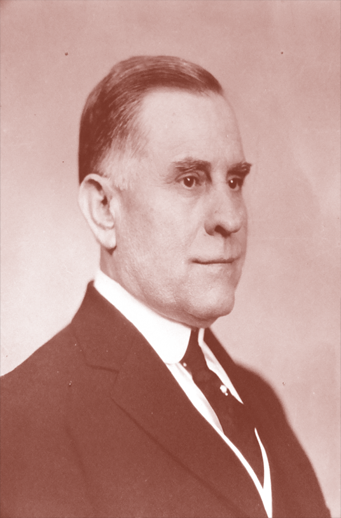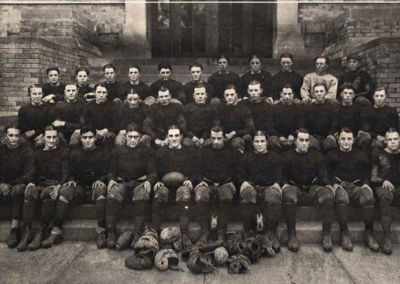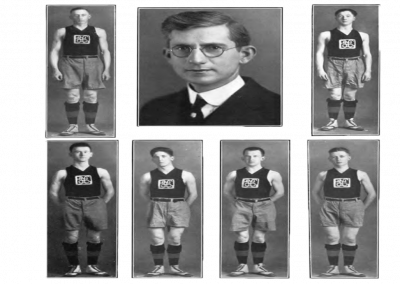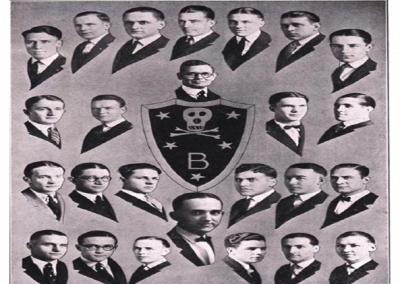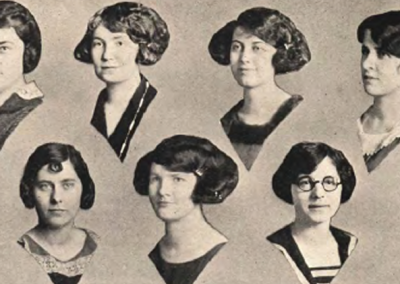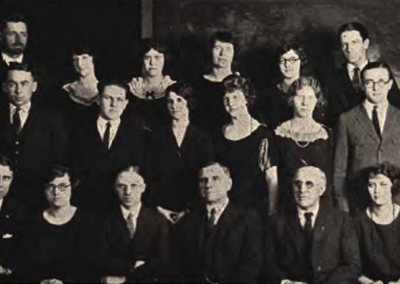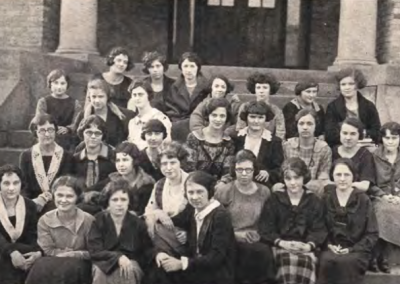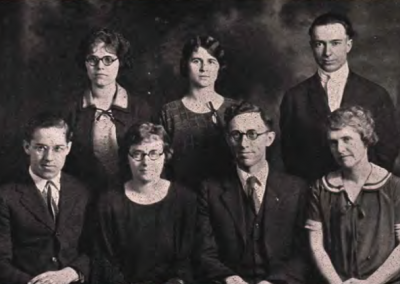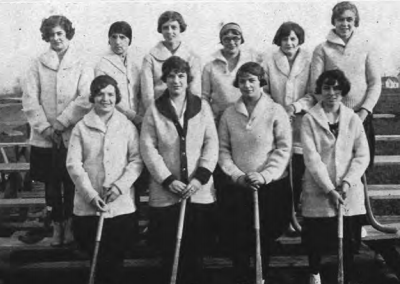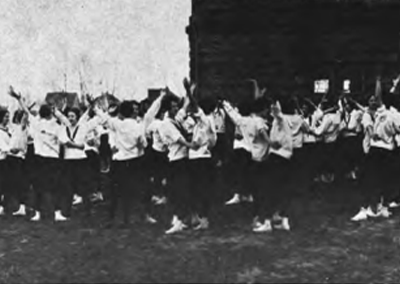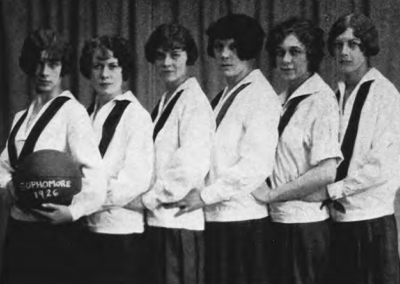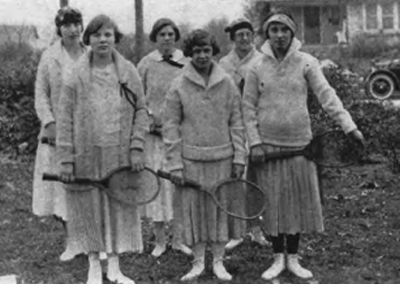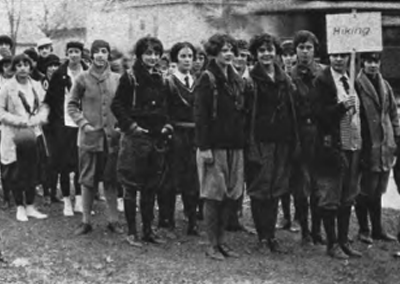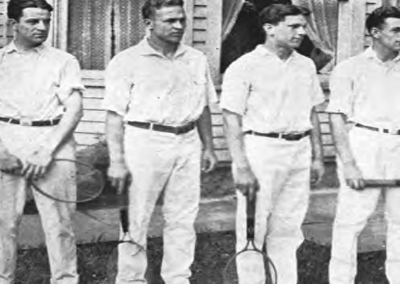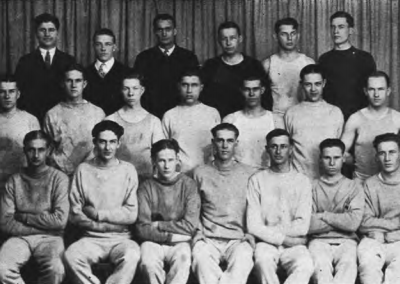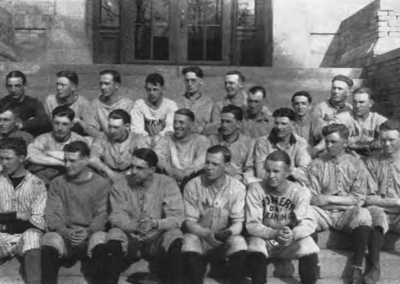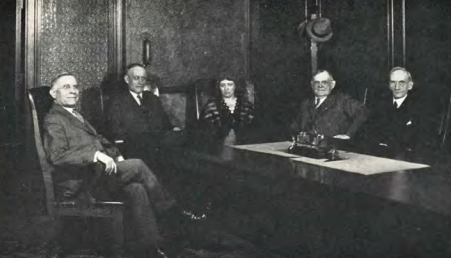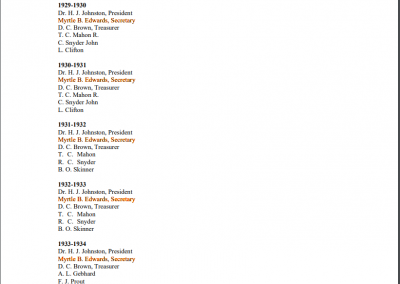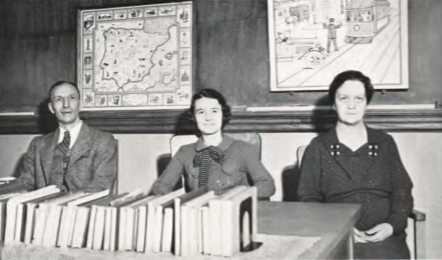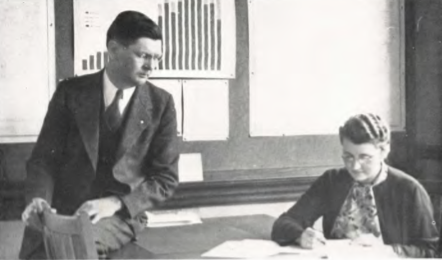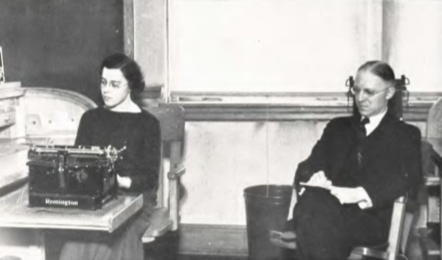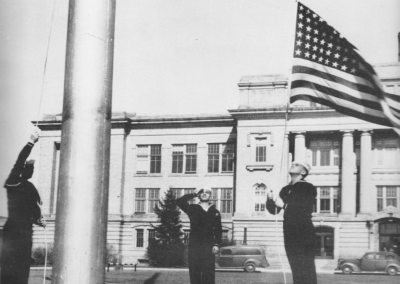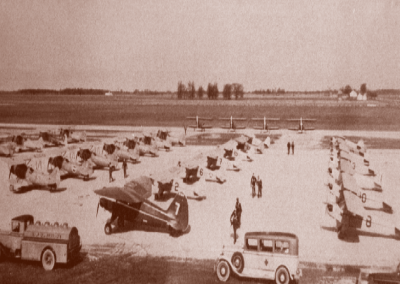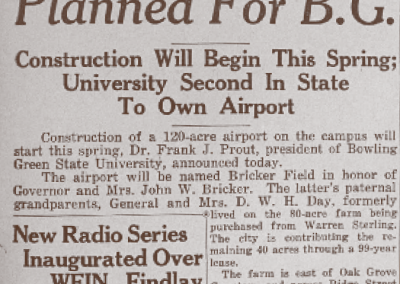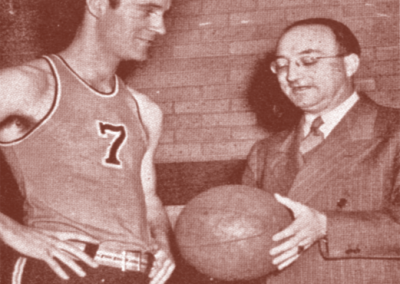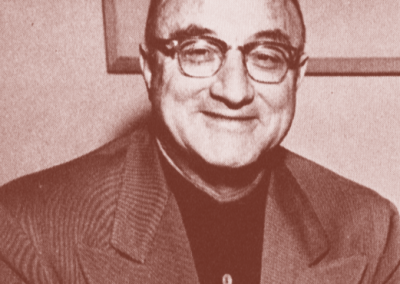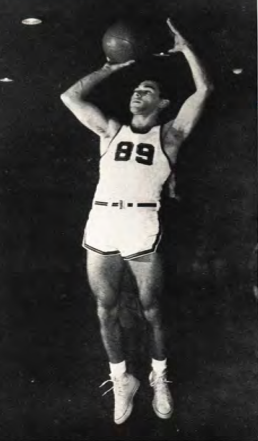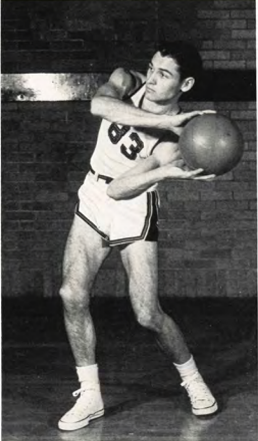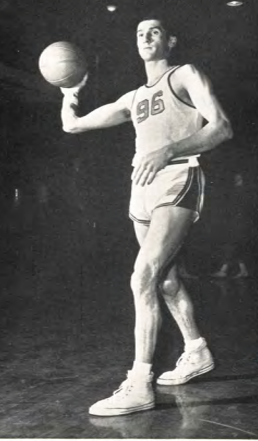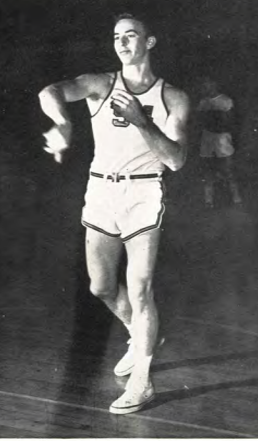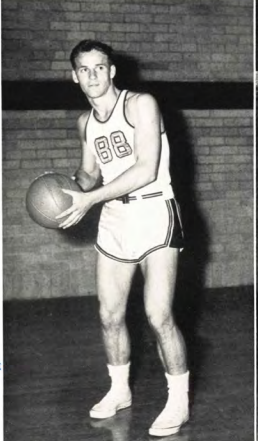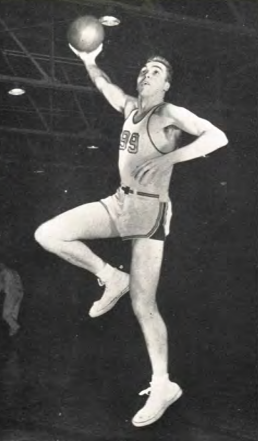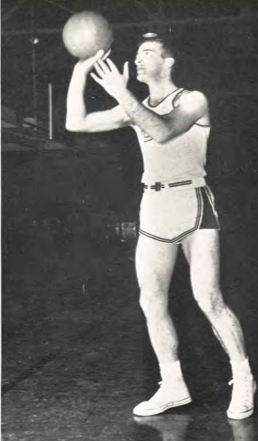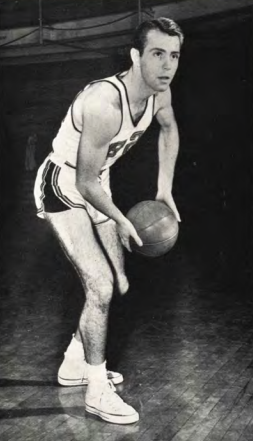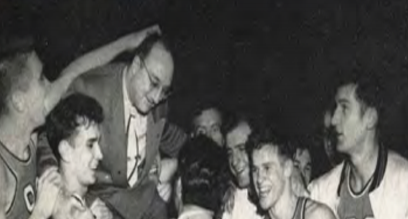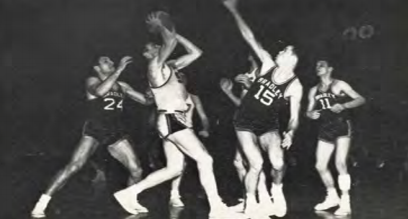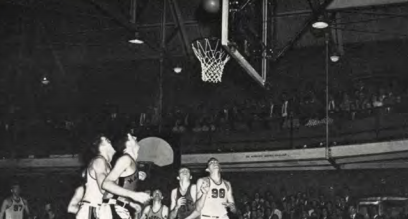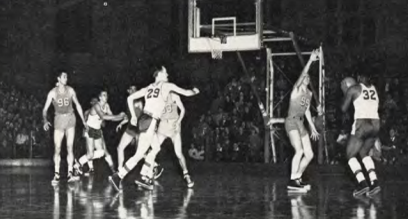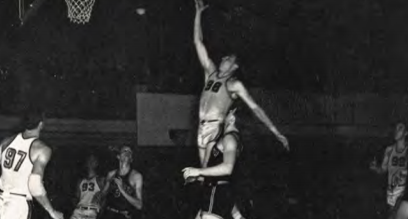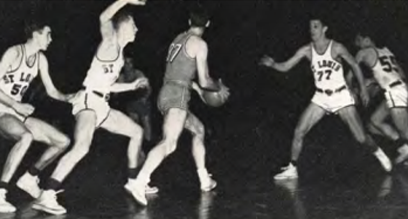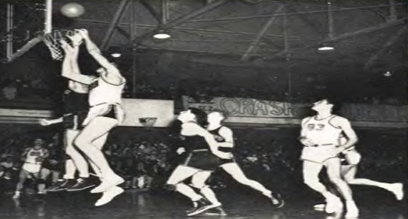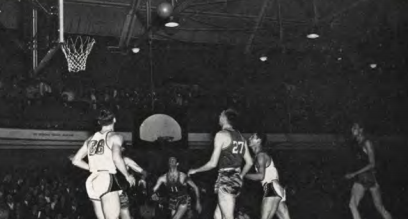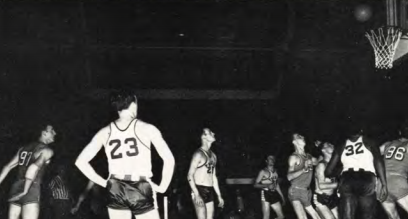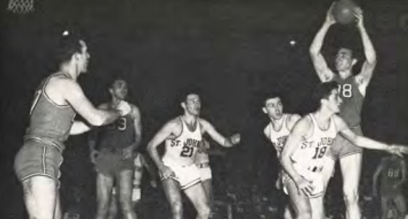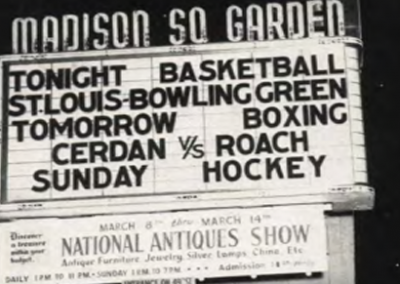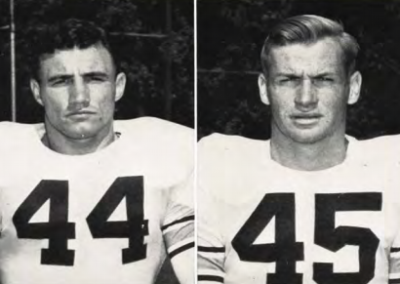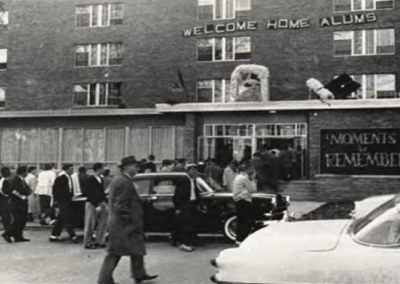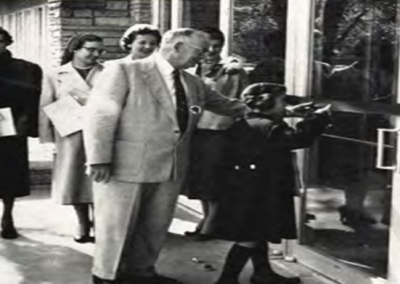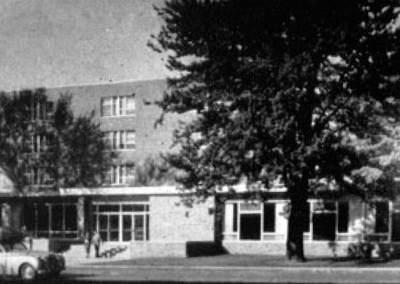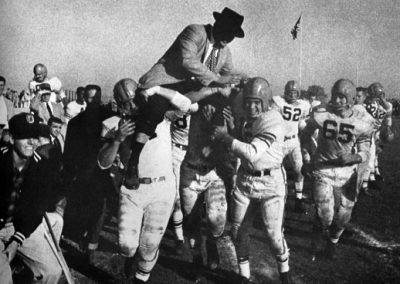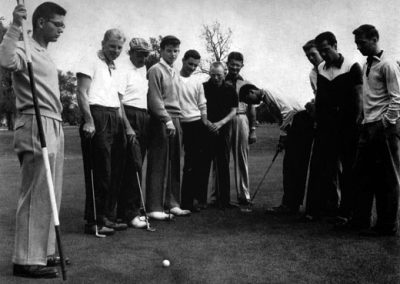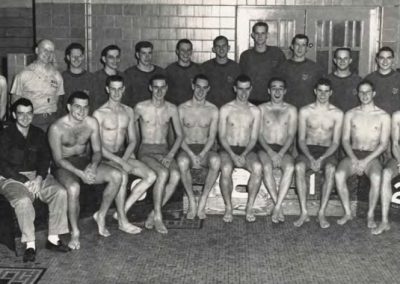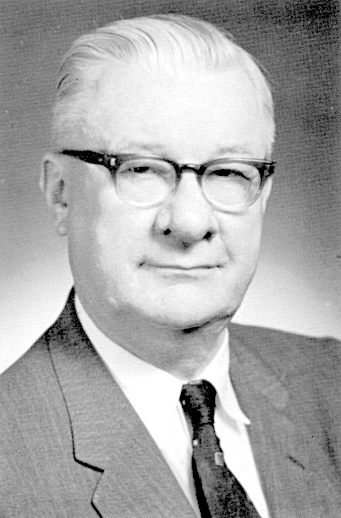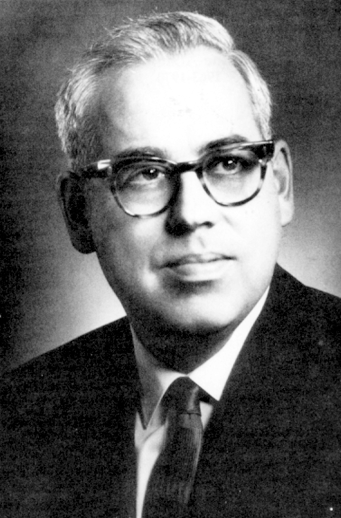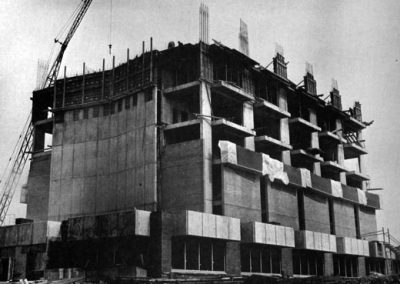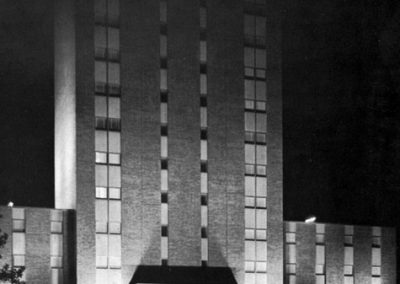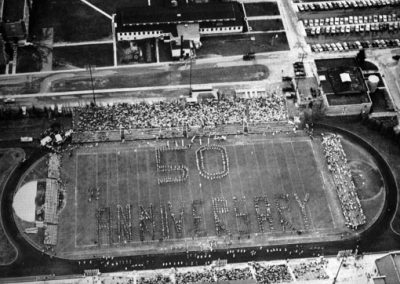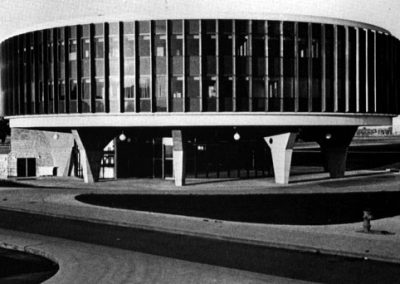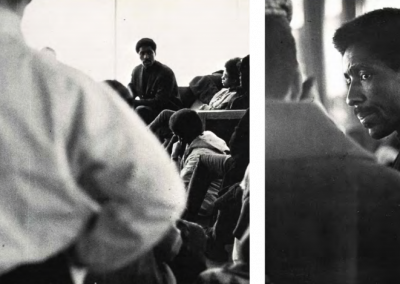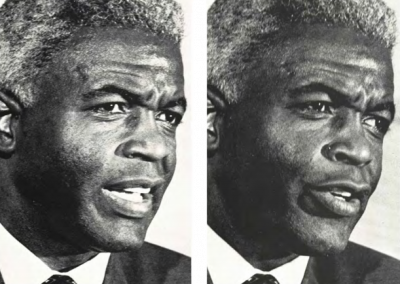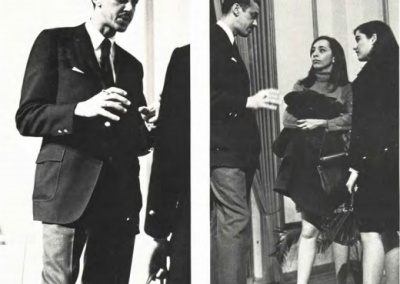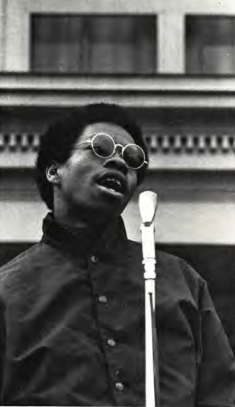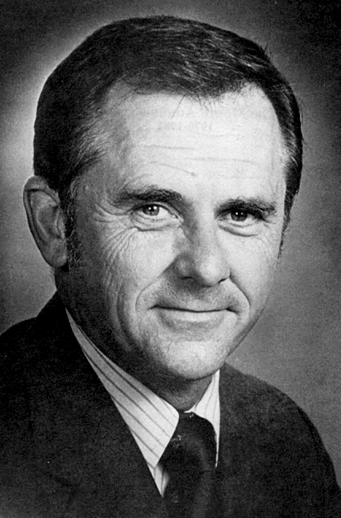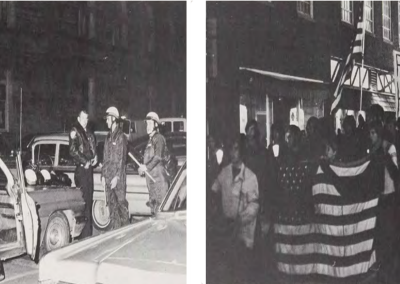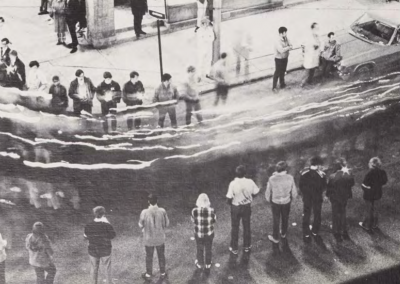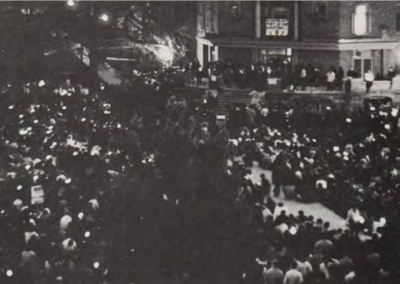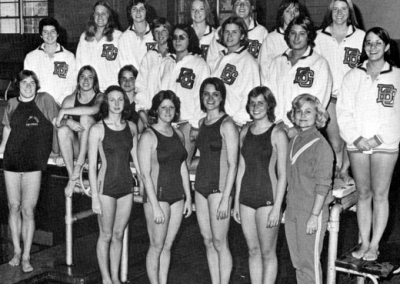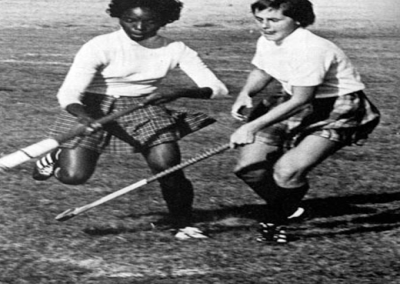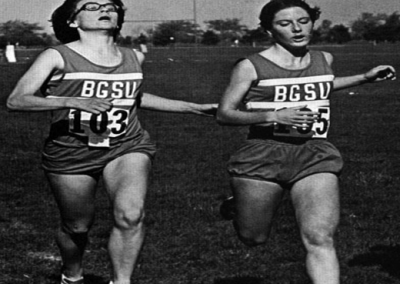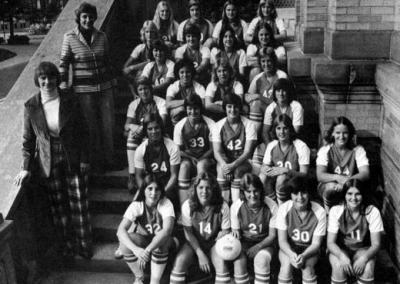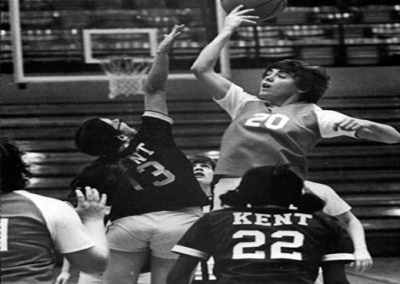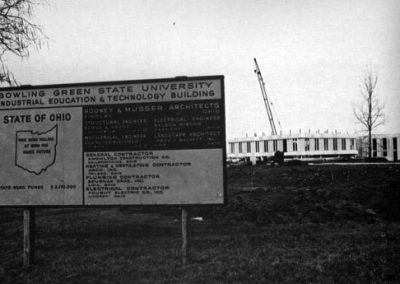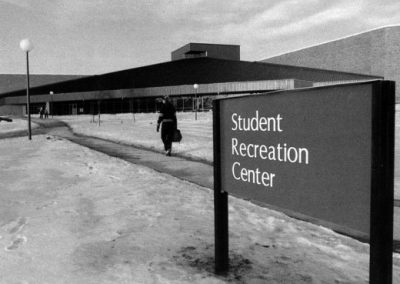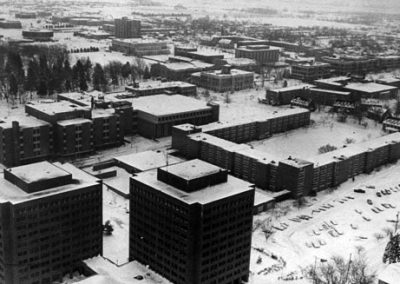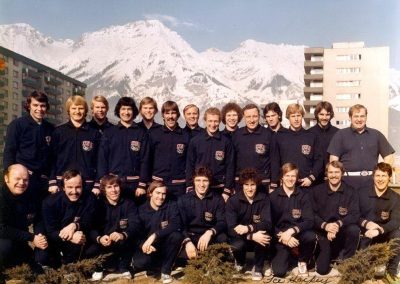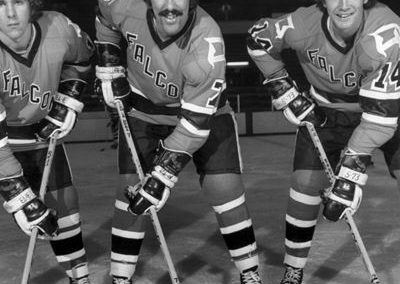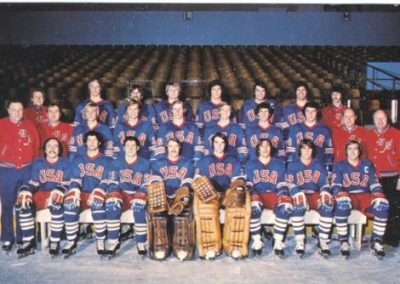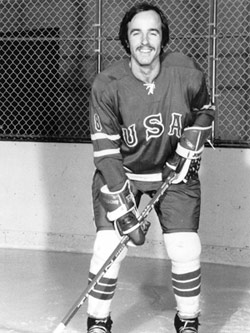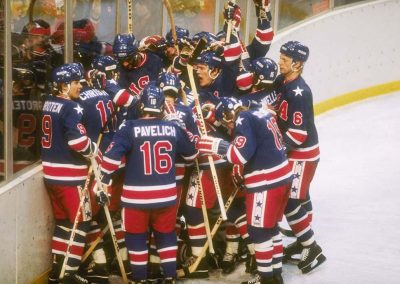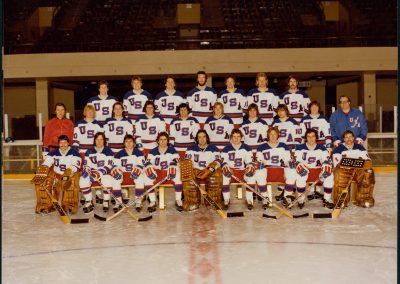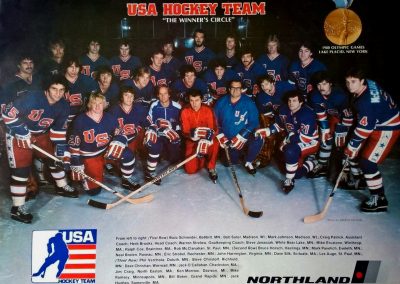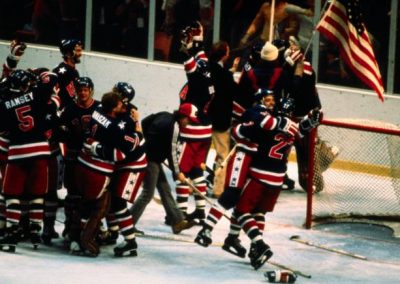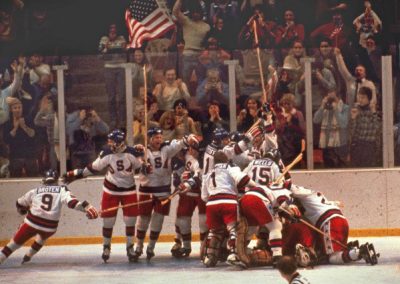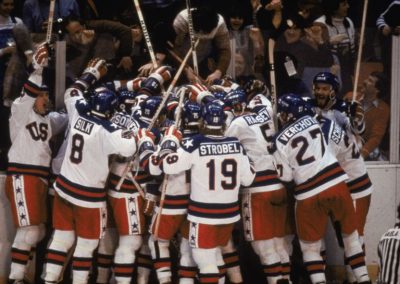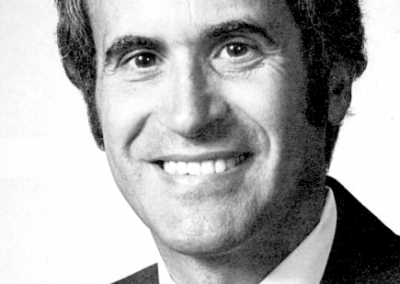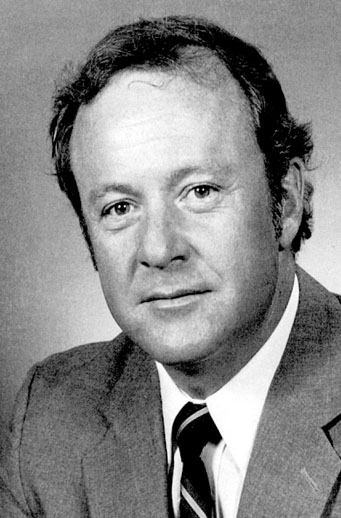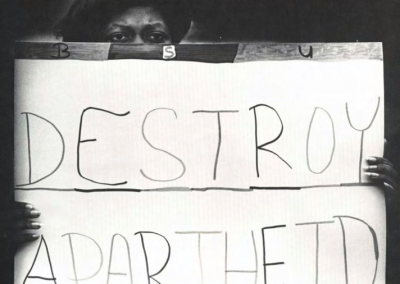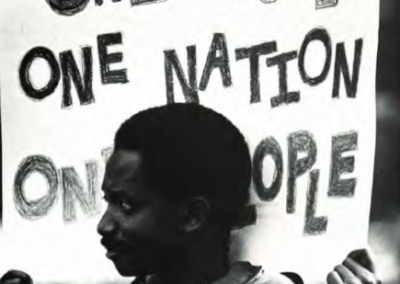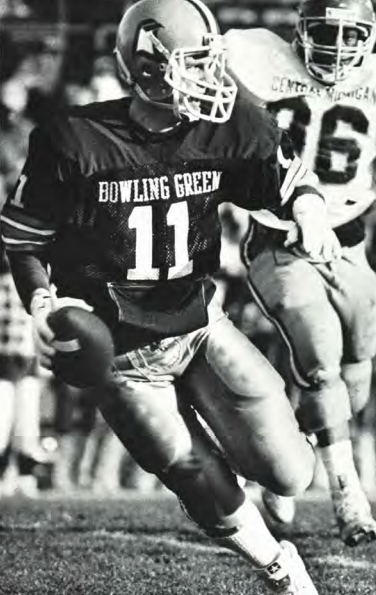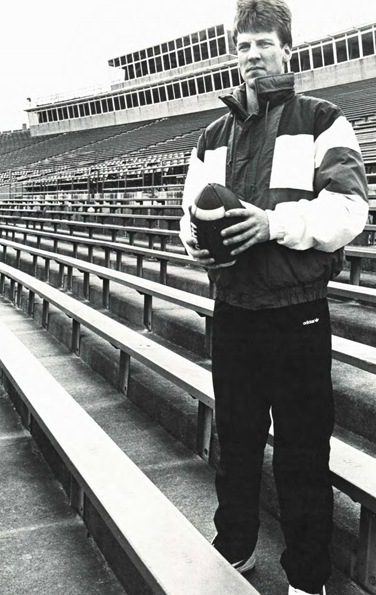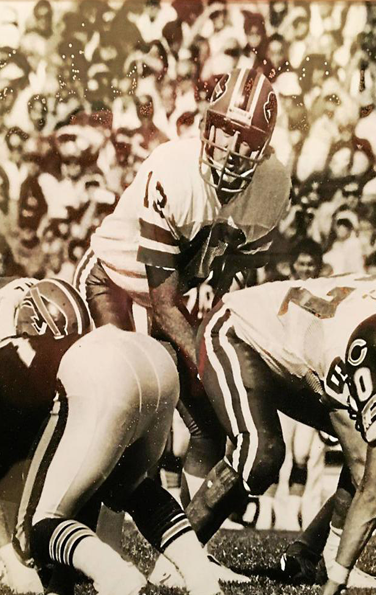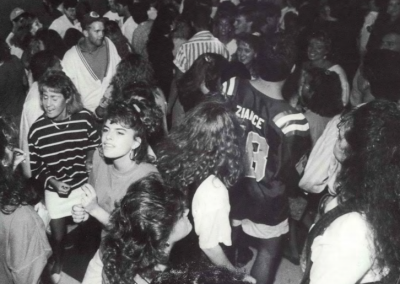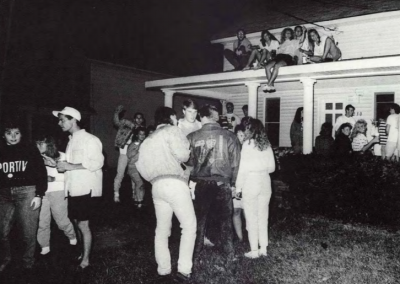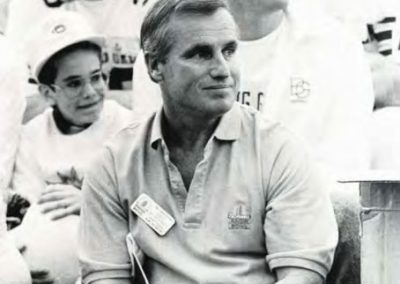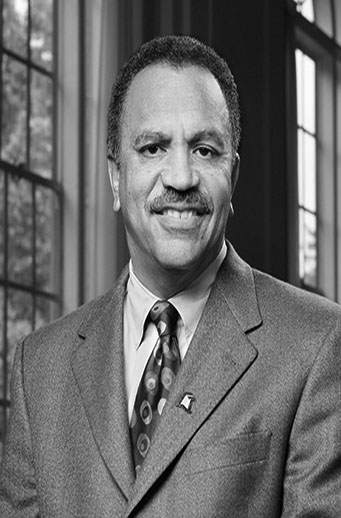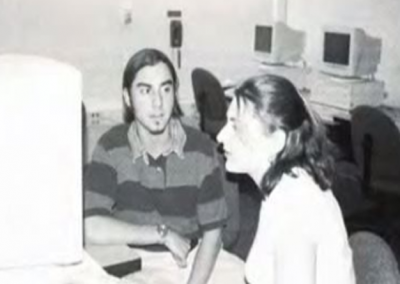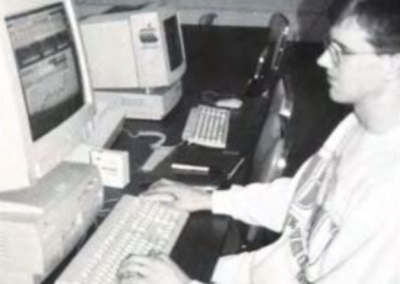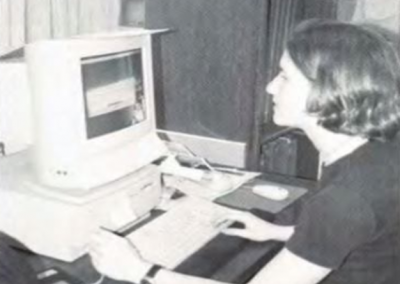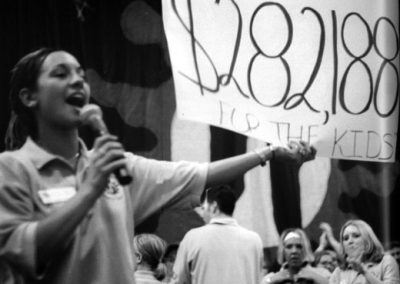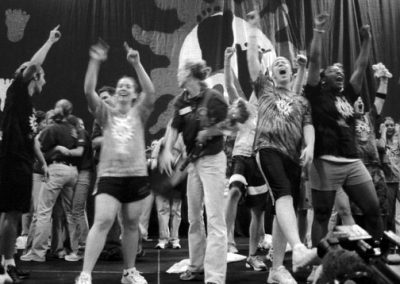THROUGH
the
years
in the beginning
1910-1914
creating a foundation for growth
1915-1919
growing pains & fighting for legitimacY
1920-1924
Increasing enrollment and robust student life
1925-1929
‘roaring’ through the late 1920’s
1930-1934
Weathering & growing through the great depression
War Years & Growth
1935-1939
Building a university
1940-1944
Pulling together in the war years
1945-1949
Vets storm the shores of educational opportunities
1950-1954
Atomic bombs and social growing pains
1955-1959
A golden era of growth and champions
Activism & Social Change
1960-1964
Leadership changes; campus gets a greater say in governance
1965-1969
Major physical growth, major student demands
1970-1974
Campus marches & world class achievements
1975-1979
New buildings, new programs, a blizzard & a music festival
1980-1984
A Golden Age for hockey
New Direction, leadership, & Facilities
1985-1989
Divestment pressure, celebrating 75 years, & sports championships
1990-1994
Budget cuts, push for unionization & student voting representation
1995-1999
Core values, learning communities, the internet & a new Union
2000-2004
9/11, a new Union, more technology and ESPN Game Day
2005-2010
New buildings, new leadership & an eye to tomorrow
The Last 10 years
1985-1989
Divestment pressure, celebrating 75 years, & sports championships
1990-1994
Budget cuts, push for unionization & student voting representation
1995-1999
Core values, learning communities, the internet & a new Union
2000-2004
9/11, a new Union, more technology and ESPN Game Day
2005-2010
New buildings, new leadership & an eye to tomorrow
1910-1914
Creating A Foundation For Growth
On July 25, 1915, 35 students gathered in Chidester Theater in downtown Bowling Green for their commencement. They exited the theater as Bowling Green Normal School’s first graduating class.
That day in 1915 marked an end to an educational journey for those 35 students, but began a process where those 35 students have since been joined by more than 169,008 other graduates in the 100 years since. It was from those humble beginnings, and those first 35 graduates, that Bowling Green has grown into a major University of more than 18,000 students: A far cry from the humble beginnings of 1910.
According to author James Overman’s History of Bowling Green State University, the city was chosen for it’s tight knit community. Overman wrote “the commissioners were favorably impressed by the attitude shown by the citizens of Bowling Green and felt that the community would give loyal support to the new school.” The selection ended a highly competitive process that saw neighboring towns such as Fremont, Van Wert and Napoleon lose in their bid to be the site of the new normal school. Bowing Green City Council later authorized the purchase of 82.5 acres on April 24, 1911, as the site for the new school.
The school was officially named on Feb. 16, 1912, as school trustees chose the name Bowling Green State Normal School and appointed Homer B. Williams the school’s first President (1912-1937) . Williams accepted the title formally a few months later, on May 23. That same year a general building plan was approved with the “whopping” amount of $150,000 established to have the new school take on a physical presence.
Since it’s creation, a core focus of the University has been its intended goal to serve as an institution for the training of teachers, and that tradition has carried forward today with the large and robust College of Education and Human Development. Not only was teaching curriculum in the original plans for the school, but students also were required to attend a weekly chapel service.
Aside from a highly planned curriculum, Bowling Green’s founders wanted to ensure the school was taken seriously. Unlike many other schools at the time, they created entrance requirements for their students, including graduation from an approved four-year high school. In September 1914, all the preparatory plans for administration and curriculum were put into effect. Classes began under the instruction of 10 faculty members guided by President Williams. That first year, 304 students were part of the inaugural group learning at the new teachers school. Orange and brown were also selected as the school’s official colors that year.
Although the school metaphorically opened its doors in September, the new institution actually lacked any real buildings yet to house students. Construction on University Hall had started in 1913, but wouldn’t be completed until 1915. That year it would join North Hall Dormitory (Williams Hall), the first building opened that year, along with the original power tuition and required students to pay only for lab materials. Fees in the early years were in the neighborhood of $10.
Before the ever-catchy fight song “Ay-Ziggy-Zoomba”, which sports fans enjoy today, music instructor Ernest G. Hesser’s “We Hail You, Dear Normal College” served as the college’s first song. Another tradition, the University Seal, appeared a little differently in its original form but the symbolism has remained the same. Most changes were made to ensure legibility of the seal even on a smaller scale, when used for things such as stationary and jewelry.
Today, if any University student were asked to name all organizations on campus, they would probably be stumped after the first 10 or 20. The number of organizations and activities today seem infinite. The school’s very first organization was the Book and Motor, which actually remained active until 1965, when it was replaced by the national honorary society Phi Kappa Phi. Music and choral groups were also popular during the first years of the school.
In what sport did the Bowling Green Normals men lose their first game in?
In 1910, the founding year for BGSU, the speed limit in downtown Bowling Green was?
1915-1919
Growing pains and fighting for legitimacy
The period from 1915-1919 was a time when the University, then known as Bowling Green State Normal School, was working to establish its identity and find its place in higher education. The two-year, teacher-training school was fairly new, but students and administrators were already pushing for and creating change on the campus.
During those years the normal school started its first athletic team, men’s basketball, in 1916. And the administration worked to overcome political opposition to grow beyond a normal school, awarding its first four-year bachelor’s degree in 1917, and gaining college status and a new name, Bowling Green Normal College, in 1920. During this period the University dealt with growing pains and obstacles ranging from the weather, to what was then known as the Great War (World War I) as it worked to get’s its footing and grow beyond being a teacher training school. During those years the normal school started its first athletic team, men’s basketball, in 1916. And the administration worked to overcome political opposition to grow beyond a normal school, awarding its first four-year bachelor’s degree in 1917, and gaining college status and a new name, Bowling Green Normal College, in 1920.
The administration worked to overcome political opposition to grow beyond a normal school, awarding its first four-year bachelor’s degree in 1917, and gaining college status and a new name, Bowling Green Normal College, in 1920. “It seems to me what Bowling Green was really going through in the late teens was trying to establish some stability,” said Gary Hess, former University professor of history and local historian. Gary Hess continues to say
“This is a time when a lot of the traditions are established, so despite that instability, the school does begin to take on some of the trappings of a college.”
“For the first several years, the University’s financial needs were basically met by the state appropriations. Now, they’re down to providing about 30 percent of what the University needs.”
Tuition and expenses
Compared to today’s landscape of higher education, where students are often burdened with tuition increases and thousands of dollars in student loans, the early years were indeed an idyllic time. Tuition was free when the school first opened its doors, but within a few years, the administration was forced to begin reconsidering its free-education policy. According to “The History of Bowling Green State University,“ by James Overman, on April 29, 1916, University President Homer Williams received a letter from the government suggesting he and leaders of the other four state-supported institutions in Ohio discuss ways of securing more funding. The state of Ohio, the letter stated, had reached its limit for supporting educational institutions.
But despite several meetings with the other state schools and a lot of discussion, Bowling Green was able to remain tuitionfree for several years, Overman writes. But in 1921, tuition was charged for the first time at the college. The cost was $10 per semester. Hess said normal schools (or teacher-training schools) in most states began tuition-free because state officials looked at them as a way to get quality teachers and further the base of educated citizens in their states. And in the early years, Bowling Green did not have to charge tuition because its costs did not exceed what the state provided.
Larry Weiss, co-chair of the centennial celebration committee, said President Williams struggled himself to pay for an education and he wanted to make it easier for his students. Aside from holding off tuition for a while, Williams kept other costs low enough to make the University more affordable than most other state schools in Ohio.
“He well knew what it was like for students trying to come up with the money.”
“As a result of the storm, all railroad traffic came to a standstill, and coal shipments in transit failed to arrive.”
In March 1920, a tornado hit Bowling Green. According to Overman, several buildings, including the Administration Building (University Hall) and the power plant, were badly damaged. Classes were cancelled until the buildings were repaired and the weather was “mild enough to make heat unnecessary.”
Weather
One thing all Bowling Green students then and now have in common is the weather, dealing with the wind, ice and snow during the winter months. But students in the winter of 1917 experienced extreme weather. On December 8, 1917, Bowling Green was hit by what Overman called “the worst blizzard on record,” at least at the time of his writing. Because there was not enough coal for heating, classes were cancelled until after Christmas break. The school received enough coal to resume classes after the break, but, partially because of World War I rationing, the supply was limited and classrooms and residence halls were only partially heated that winter.
WWI
Most students in those early years were women, partially because education was the main emphasis and females dominated the profession. In 1916-1917, only 24 men attended the University (out of 274 total students), and in the following year there were 28 men out of 257. Because of these low male numbers, World War I had little affect on attendance at the University. It wasn’t until later, when the college began offering courses other than teaching that men started to enroll in higher numbers. Hess said other than an increased show of patriotism on campus, World War I did not have much of an impact on University life.
Athletics
In 1916, two years after the school opened its doors, the first athletic team, men’s basketball, was organized. The Bowling Green ‘Normals’ lost their first-ever game to Toledo, 33-18. The team went on to a 2-2 record in their first year. The next season, however, they pulled off a winning record of 6-4. Bowling Green formed its first football team in 1919. The team lost every game, going 0-3 on the season. After four consecutive losses in 1920 (seven overall), they managed to win their first game against Kent State, 7-0. The next year they went on to win their first Northwest Ohio Athletic Conference championship, finishing 3-1-1, highlighted with a whopping win over Findlay, 151-0.
Four-Year Degrees
Though Bowling Green began as a two-year training school for teachers, the administration wanted to expand its offerings to four-year bachelor degrees, but ran into opposition. Other state schools, including Ohio State University, fought to prevent Bowling Green from gaining the right to grant four-year degrees because they saw it as competition, Weiss said..
“We wanted to be able to give [four-year] degrees, and that created a ruckus,” he said. “[Other schools] saw it as stealing students away from them.”
Hess said other Ohio schools administrators simply did not believe Bowling Green, or Kent State, the other normal school in northeast Ohio, was up to the challenge.
“I think they honestly believed Bowling Green and Kent [State] should be nothing more than two year normal schools… that was all the faculty was equipped to do. Of course, they were also interested in protecting their own turf.”
University President Williams led the effort to overcome their objections, and in 1917 the University awarded its first bachelor’s degree, a Bachelor of Science in Education, to Margaret L. Grant. According to Overman, Grant was followed by eight more students earning four-year degrees in June 1918.
BG’s first cheerleader appeared in what year as a volunteer?
The first elected cheerleader was Ivan “Doc” Lake, and the squad was complete with female “assistants.”
When Bowling Green Normal College started in classes in 1914, tuition was?
Tuition was charged for the first time in 1921.
1920-1924
Increasing enrollment and robust student life
The early 1920’s was a period of rapid growth at Bowling Green. Entering its second decade and still called Bowling Green State Normal College, not only was the school growing physically, but also in terms of the holistic development activities and student groups, defining a much broader student experience. The outgrowth of these student activities probably reflected the healthy growth in the size and breadth of the student body. Enrollment was rapidly increasing, growing from 208 in 1918-19 to 681 by 1924-25. With the plans for added buildings and faculty came the natural increase in student activity.
The 1924 Key yearbook lists 15 campus organizations, including a Home Economics Club, College Social Committee and Athletic Boosters Club. This was also a period during which Ye Olde Five Brothers formed, a highly social fraternity whose presence was reflected all over the pages of the fledging Bee Gee News, which was created by the robust Country Life Club, in May, 1920.
But while the enthusiasm was rampant within the community of Bowling Green and there was local excitement for the future of the school and city, not everybody was in favor of the small college, in the small town of Bowling Green, getting much bigger. When the college began granting four-year degrees, there was opposition–mostly coming from Ohio State University examiner, Bland L. Stradley.
In his account of the Bowling Green’s first 50 years, author James Overman writes of the struggle the college went through to gain respect. He tells of OSU sending three investigators to prove the Normal College’s inferiority. According to Overman, the investigators found superb instruction, but still maintained Bowling Green should not be allowed to grant four-year degrees.
However, College President Homer B. Williams responded with the creation of his own committee, which included Overman and Clayton Kohl, and sent them to investigate OSU! Their report found the truly inferior school was, in fact, OSU, and OSU had no choice but to concede the point. From that point on, says Overman, Stradley was a friend of the University.
But while the politics of this situation was playing out, Bowling Green stayed focused on its own internal growth and vitality. It was during this period that the annual Key publication, effectively the University yearbook, was revived, having been discontinued in 1918 after only one edition. For a few years, the Bee Gee News published an annual addition at the end of each year. But with much student protest and assemblies, and a contribution from Overman, the dream of getting an annual was finally re-realized in 1924. The name for the book comes from a statement made by then Athletic Director R.B. McCandles at one of the assemblies. He called his own college yearbook “a key which unlocked memories of college days.”

Coach & Athletic Director
R.B. McCandles
One thing that is striking while looking through archived Bee Gee News newspapers and Key publications from the era is the tight bond that people felt on campus. Whenever a professor did something notable– such as publish a new book, as Overman did in 1924 on mathematics, or in 1923 when a new species of fish was named after biology professor Edwin Moseley – the feat was proudly displayed in the pages of the Bee Gee News. Sports were also coming into being at the young college. In 1921, the University football team set a record by defeating Findlay 151-0. The Bee Gee News wrote of the incident,
“It takes a mighty speedy football team, and an adding machine to total 151 points in the short period of fifty-two minutes.”
The first-ever Bowling Green Homecoming game was played in 1922 against Toledo University. The game ended in a tie, but turnout was high, the paper writes, and there were feelings of great camaraderie and celebration. A parade held on Court Street featured float entries from nearly every University organization.
The following year’s Homecoming game was played against Ashland and was an even bigger success than the first. The Normals won the game 10-0, and the Bee Gee News declared it the “Biggest Day in History of [the] College.” As the athletics program grew, by 1925 resistance was also growing to the sports teams nickname, the “Normals.” Consequently, as a first step, the athletic awards letter was changed from a block letter “N” to a block “BG.”
And Bowling Green was developing into more than just a training school for teachers. After the official opening of the Training School in what is now known as Hanna Hall, in 1921, males, and non-teachers, were enrolling in ever-increasing numbers. By 1925, they were about a fifth of the University population. During this time departments of physics and biology were added to the curriculum
Some of the men, led by a prominent and very active student, “Doc” Lake, formed the Ye Olde Five Brothers society. According to Overman’s account, the society was formed on a train ride. The group had purchased some strong tobacco – “Five Brothers” tobacco – and initiation consisted of keeping the tobacco in your mouth on the train ride. The group was among the most social at the University, organizing and attending dances and sporting events all through the years. But it wasn’t only the men who were organizing social groups. “Five Sisters” was also formed during this time, and later joined by the “Seven Sisters.” These groups constituted the earliest local social fraternities and sororities at the college
Prominent national figures were visiting the University during this time. Perhaps the most notable of these came in 1921, when Glenn Frank, a draftee of the League of Nations charter and editor of Century magazine, gave a lecture in December Of course as the student groups and prominent figures of
the day have now faded to only historical existence, was does remain as evidence of the early 1920’s is much of the physical plant of those early days. Shatzel Hall, originally a girl’s dormitory, was built, as wasthe Training School Building (Hanna). Plans for other buildings were underway, and a 1924 map shows seven already existing buildings and another nine planned projects, including the first library (McFall). As the second half of the “roaring” 1920s unfolded, the college was well on its way to join the national boom of prosperity.
- BGSU History
- American History
1920
Prohibition begins
Cleveland Indians defeat Brooklyn Dodgers in World Series 5 games to 2
Women can vote
Although football began at BG in1919, the team’s first victory was not until Nov. 6, 1920 against Kent State
The first cheerleader appeared (they had a squad by 1924 with three people)
Classes cancelled when campus is hit by a tornado
1921
BG defeats Toledo, 20-7, to win its first football conference championship on Oct. 20
BG’s first conference title came as a member of The Northwestern Ohio Athletic Conference
1922
The flapper makes her debut
The first radio sound effect – two blocks of wood slapped together to simulate slamming door debuts
The first Homecoming is held, sponsored by the Win One Club
1923
President Harding dies
U.S steel gives workers eight hour days
The BG marching band makes its first apperence at the Homecoming Game; women were not admitted as members until 1943
1924
RCA transmits first wireless photographs from London
Walt Disney creates first cartoon, “Alice’s Wonderland”
Macy’s department store holds first Thanksgiving day parade
Shatzel Hall was built
New library plans finalized
New girls dormitory announced enrollement is 830
1925-1929
‘Roaring’ through the late 1920’s
The tone of the country during the “Roaring Twenties,” was one of progression, affluence and enjoyment. And BGNC was no exception. As the college crossed the midpoint of the decade, the Normal School continued its rapid growth and evolution. The faculty at the time guided the school’s progression in sport, academics and more. By 1927, the Bowling Green Normals decided it was time to adopt a new mascot to represent the sports teams, following increased resistance to the inaugural nickname. The students and faculty of the day nearly unanimously agreed that “Normals” didn’t properly capture the spirit of Bowling Green athletics.
The deliberation was short-lived and a solution quickly proposed. A local newspaper article in the Bowling Green Sentinel-Tribune suggested the “Falcons.” School officials welcomed the nickname, agreeing that a falcon is “famous for its fierceness, speed and courage.” Just like that, a new identity was born, one thousands of students in the years ahead would embrace and cherish.
The ’27 school year brought more sporting change when a cross country team was added, rounding off the athletic program for the next few years. At this time, only men were allowed to compete in sports. The women would have their day, though, when shortly thereafter, they were allowed to compete in intramural athletics events, a precursor to full-fledged women’s competition.
But intramural sport acknowledgment was still a very small step in gender equality fostered with the right to vote granted to women at the beginning of the decade. Nationally, and in Bowling Green, women were still fighting for equal social rights beyond their ability to cast a ballot. In 1926, a handbook was printed dictating women’s conduct on campus, the first of many handbooks that were published until 1970. Women, though making up a majority of the current student population, were also unable to ride in cars without proper supervision and were publicly criticized for smoking.
Strides were made in 1928 when Myrtle B. Edwards became the first woman to serve on the Board of Trustees. For seven years, she was the sole voice of female representation to the Trustees, creating a legacy and guiding the future of the school in a direction that considered women’s roles. The school’s advancement did not stop there.
On April 2, 1929 a piece of state legislation, the Emmons-Hanna Bill, was passed which legally changed Bowling Green Normal School’s name to Bowling Green Normal College. Only three months later, the College of Liberal Arts was established, making the College a duel-purpose institution. James Overman became the first Dean of the College of Liberal Arts and Clyde Hissong the Dean of the College of Education.
This addition created problems as well as opportunities. Faculty were unsure as to whether or not they would serve one college or both and what would be expected of their service. To address these issues and more, President Williams proceeded to appoint a committee to study the evolution of faculty duties required with the addition of a new college.
After receiving input from the faculty, the committee decided there would be no division made and all departments and faculty members should serve the College as a whole, rather than the separate colleges of education and liberal arts. This arrangement survived until 1951 when the University’s expansion no longer supported this framework. The physical campus also grew steadily in the late ‘20’s as Shatzel Hall, begun earlier in the decade, came online in 1926. By 1929, the campus was comprised of just eight buildings. All classes and events for the 800-900 students were held in the limited facilities the late 1920’s provided.
Today, students can choose between a seemingly endless list of majors and classes, and they are even given the opportunity to form their own focus of study if they cannot find a fit among the established programs. In the late ‘20’s, though, this was not the case. The Normal College was actually considered ahead of its time by offering six majors and four minors to enrolled students, while most normal schools at the time focused solely on education and training teachers. By the 1929-1930 school year, students could major in English, chemistry, French, history, mathematics or social science. They could minor in biology, Latin, physics and Spanish.
As growth of the school remained steady ending the decade, such was not the case nationally. The country’s financial system was economically rocked with the collapse of the stock market on “Black Tuesday” in October 1929. The ripple effect heading into the 1930’s was what we today call the Great Depression. BGNC seemed to remain unaffected at first. Overall enrollment actually increased in 1930. Slightly more than 1,000 students were attending by the end of the 1930-1931 school year. This increase was attributed by many to the low cost of attending Bowling Green’s college, a price lower than almost any other higher education institution in Ohio at the time.
Also, as the national job market began to shed jobs, young people headed to secondary education in order to postpone employment and wait out the country’s economic downturn. While BG managed to escape the dire effects in the early years of the Great Depression, darker days were ahead. But in this case, longevity would have its advantages. President Homer Williams, who served longer than any of Bowling Green’s presidents, would provide the consistency and leadership in the fight to keep BGNC’s doors open and advance the cause of higher education in Northwest Ohio during the coming economic storm.
- BGSU History
- American History
1925
Yale students toss Frisbee pie plates
Tennessee governor signs law forbidding teaching of theory of evolution in state’s public school system, or any other theory denying creationism
Athletic letter winners become members of The Varsity “N” Club
The latest snowfall recorded in Bowling Green was May 24, 1925
1926
America’s 150th birthday
The first handbook governing women students’ behavior on campus is publication was 1970
1927
Charles Lindbergh flies over the Atlantic
Holland Tunnel under Hudson River opens; first such tunnel
Babe Ruth hits 60t homer
Television introduced to American public
The “Falcons” is selected as an appropriate nickname for the BG sport teams because an article in the local newspaper suggested it
Previously known as the “Normals,” BGSU became known as the “Falcons” in 1927
Men’s gym competed
Shatzel Hall opens
Enrollement is 865, 684 are women
Colege of Liberal Arts and College of Education established
1928
The New York Times uses first moving electric bulletins to announce results of presidential election
1929
Black Tuesday! Stock Market collapses. Start of the Great Depression
The word “normal” was dropped from the school’s name in 1929
1930-1934
Weathering–and growing through–the Great Depression
The spirit and sense of community established early in the history of Bowling Green has been carried forward through its entire existence. But is was no more evident than when the country faced the enormity of the effects of the Great Depression, as the impact began to hit home less than two years after the market collapse of 1929.
By the early 1930’s, as companies either shuttered their operations or laid off significant numbers of their workers, the loss of earnings was being felt by state governments. The general revenue fund that supported higher education in Ohio began to dry up and all state schools and the state educational system began to suffer.
Enrollment stabilized in the 1,000-plus student range early in the depression years, but by 1933 had declined to 930. The Key yearbook became a casualty, suspending publication in 1933, but returning a year later. But Bowling Green’s own struggles with funding and enrollment were about to take on a much more serious tone. Coinciding with a loss of operating dollars for education, the state also faced the issue of providing some sort of safety net for the victims of the Great Depression. As one solution, the Senate Finance Committee proposed in 1933 that they close one state school and convert it into a mental hospital. Because Bowling Green was the smallest of the state schools as enrollment had declined to 930, it became the state’s number one target.
The Bowling Green community was not going to stand idly by and let their school be shut down without a fight. The school was joined by much of Northwest Ohio to form and back a committee that would act on behalf of the well being of the school, its faculty and most importantly, its students. The committee gathered evidence to show the state, that if Bowling Green closed, current and future students would be unable to go elsewhere due to location and financial issues.
Their fight was not in vain, the state recognized the evidence Bowling Green gave and voted later that year against closing down the school and converting it into a mental hospital. But though campus escaped the threat being shut down, the impact of the depression was being felt in other ways.
The new Commercial Arts Building (Hayes Hall) was delayed in its completion due to lack of funding and even when opened, could not be fully appointed with all the needed equipment. Having been spared closure, the college moved forward with its development. Athletically, Bowling Green entered and completed its first year of competition in Ohio Conference, becoming an official member with 21 other schools.
During those years, the concept of an actual athletic department didn’t exist, as all sports were seen as an extension of the Department of Physical Education, headed by Warren E. Stellar in those years. Various aspects of student life also built on the reprieve granted by the state. In 1934, the BEE GEE NEWS started a movement on campus to create a student government. With the increase in the number of men
enrolled at the school, there appeared to be greater need for a co-ed student council. Previously, there was only a Women’s League, which acted as a governing body for the women students, but students began calling for a larger and more representative student council.
On March 20, 1935, the BEE GEE NEWS published a letter to the editor as well as an article about the growing need for a student government. The article stated…

Referring to what the newspaper staff further described as student body apathy and a sense that though change was needed, few were willing to make the effort to achieve it
“Conditions are growing so bad on this campus that something must be done. If we had a student council it is probable that the student government could do something…”
“Here we are: conditions necessitate a student council; and these same conditions would prevent the establishment of a student council…”
“Plenty of people are always willing to tell what is wrong, but only a few are willing to help better the conditions…”
The BEE GEE NEWS persisted with its proposal and soon other student organizations lent their support. The campus chapter of the Y.M.C.A. was the first group to approve the student council proposal and was quickly followed by the 3-K sorority. The BEE GEE NEWS began printing a “Roll of Honor” that listed the groups supporting the student council proposal and that list rapidly grew to include the Emerson Literary Society, one of the most prominent student groups, and the Intermediate Teachers’ Council.
In order to have the student council proposal brought to a vote among the entire student body, a large number of campus organizations would first have to vote their approval on the proposal. Then a committee of administrators and student organization representatives would have to draw up a constitution that would then have to win the approval from the administration and the student body. It took awhile to happen, but finally in spring 1936 Bowling Green received its student government and the BEE GEE NEWS’ associate editor was named the first student council president.
Meanwhile, though the decade started with hardship and uncertainty, the college was sprinting ahead through the early obstacles. The year 1935 was a landmark in institutional history. Bowling Green’s second college, the College of Business Administration, was established. Bowling Green began offering graduate programs, but most importantly, a bill was introduced and successfully passed the Ohio Legislature establishing and recognizing Bowling Green as a university. The growth cycle was now complete: first a school, then a college and now a full-fledged university with foundation to grow upon.
- BGSU History
- American History
1930
U.S population hits 122 million
BG students of 1930 remember attending the first “talking” pictures that appeared at the Clazel Theatre, named after its owners, Clark and Hazel Young
1931
Empire State Building opens; tallest in the world at the time
Thomas Edison dies
Bowling Green’s enrollment passes 1,000 for the first time in 1931, listing 1,037 students
Doyt Perry wins campus beauty contest as student
First interfraternity council formed
First Bachelor of Arts degree granted
Commercial Arts Building (Hayes Hall) opens but incomplete
First homecoming queen selected at what is the 10th homecoming
1932
Amelia Earhart becomes first women to cross the Atlantic
College joins the North Central Association
Educational “talkies” shown for the first time in classrooms; speculation was if faculty would now become obsolete
Fall 1932 enrollment is exactly 1,000
1933
Prohibition ends
Enrollment declines to 930 due to Depression
Key yearbook is a casualty of the Depression
College escapes closure or conversion to another facility due to Depression
First Bachelor of Science degree granted
1934
Bonnie and Clyde killed Drought grips the Midwest
The 1931 Homecoming Queen’s attendant was the?
A plan by members of the state legislature to turn the college of BG into...?
1935-1939
‘Roaring’ through the late 1920’s
The designation in the spring of 1935 that Bowling Green State College was now a “university,” (along with sister school Kent State) launched a host of changes in the late 1930’s due to opportunities for institutional growth around the new designation. The University broadened its academic offerings with new degree programs and hiring additional faculty. By 1938, students who attended the University could receive degrees in biological science, business administration, chemistry, economics, English, French, history, political science, Latin, mathematics, physical science, sociology and speech. During this time period, the University also stopped offering two-year teaching degrees and, by 1940, became a four-year, degree-granting university.
While expanding its undergraduate degrees, the University began to offer graduate programs, enrolling 55 students by 1939. Students in the graduate program could receive degrees only in the departments of education, English, history, mathematics, social science, biological science and foreign language. Faculty numbers during this time increased from 48 in 1928 to 73 in 1939. The University’s growth was also being fueled by additional students enrolling in the College of Liberal Arts, the College of Business Administration and the master’s program, according to James Overman, who authored “The History of Bowling Green State University.”
Record enrollment was set every year throughout the mid-to-late 1930’s as more students found Bowling Green to be a good fit for their educational needs. By the 1939 school year, 1,800 students were enrolled at the University, including undergraduate and graduate students, according to Overman. It dipped the following year to 1,600, including undergraduate and graduate students. The late 1930’s also saw the University physically double in size. In the fall of 1929, the campus consisted of eight buildings. By 1939, the number increased to 12, including a new stadium and auditorium. And the area of student activities also grew along with the physical accommodations.
The nearly two-year effort in the mid-1930’s led to a landslide vote of 523 to 25 in 1936 to create a student council. The new council was composed of 12 students and three faculty members, whose “purpose is to coordinate campus activities and to act as official student voice in affairs affecting students’ ‘interests,’” Overman wrote.
And while Bowing Green was growing in the area of student governance on campus, the University ironically found itself in uncharted governance waters in 1937. The only president that Bowling Green had ever know since its establishment in 1910—Homer Williams—retired.

“From abandoned city lots and open fields to our present beautiful campus shows clearly the great progress by our university under the guiding hand of President H.B. Williams,”
The Bee Gee News wrote this in an Aug. 4, 1937 editorial. Williams, who helped the University expand from a normal college to a University, saw the development of campus buildings, equipment, curriculum, extra curricular activities and student council.
With his retirement, faculty, staff and students welcomed their second leader, University President Roy Offenhauer, in the fall of 1937.
“He was a man of great charm and impressive appearance, and soon won the hearts of the student body, faculty and citizens of Bowling Green,”

Everyone predicted a bright future for the University under his leadership But this “bright future” was cut tragically short. Offenhauer died in an automobile accident during Christmas vacation in 1938, serving only a little more than one year as president. Answering the call of the school that he had build and nurtured, Homer Williams returned as interim president to bring a steady hand of leadership until a permanent president could be found.
That person was Frank J. Prout, who was officially inducted as the University’s third president in October 1930.
“President Williams had built a strong
teachers’ college, but it remained for his successor to build a university. Fortunately, the new president was well-equipped for this task.”

Prout, who believed in the importance of a broad liberal education for teachers, as well as for those preparing for other professions, would work to lay the foundation for the University to enter the next decade. But he would face the challenges of shepherding Bowling Green through some uncharted waters and influences well beyond the classroom: the storm that was erupting in Europe and Asia would draw the United States—and the University—into World War II.
- BGSU History
- American History
1935
Dust Storm Social Security is passed
Rural homes get electric power
Wagner Act helps labor
BGSU began offering graduate programs in 1935
Bill passes Ohio Legislature changing Bowling Green from a college to a University
The College of Business Administration was established
1936
67 percent of Americans favor birth control
Jesse Owens emerges as fastest athlete
FDR wins Presidency by a landslide
The first master’s degree awarded by the University was to Richard L. Beard of Findlay
The hottest day recorded in Bowling Green was on July 10, 1936, measuring 110 degrees
Proposed constitution drafted for new Student Government
By a 20-1 margin, the student body votes to create a student council
University votes to remain “dry”
1937
First state-run contraceptive clinic opens
Pulitzer prize in fiction awarded to Margaret Mitchel for Gone With the Wind
Golden Gate Bridge opens
Hindenburg explodes
The first BG football game is played in the old University Stadium
First president Homer B. Williams, announces he will retire
Roy E. Offenhaur assumes presidency of the University
1938
Minimum wage law set $.25 an hour
Superman is born
Smoking is said to cause cancer for the first time
Ohio Northern suspends athletic relationship with BG due to anger over fan conduct at Oct. 21 football game
President Roy Offenhaur is killed in an automobile accident; Homer B. Williams is named acting president
1939
FDR opens New York Worlds’ Fair
Pan American Airlines flies first passenger plane to Europe
U.S. is neutral as war erupts in Europe
BG celebrates its 25th anniversary
Male students are allowed to live on campus in 1939 in Kohl Hall, the furthest building from the women’s dorms
Sigma Delta Psi begins at BGSU in 1939 and is the honorary for athletics
Frank J. Prout becomes the third president of the University
New men’s dormitory opens
1940-1944
Pulling together in the war years
War was on nearly everybody’s mind as the 1940’s unfolded. When America finally entered the conflict, President Frank Prout wrote a letter to the community Dec. 11, 1941, published in The Bee Gee News imploring students to stay in school despite the attack on Pearl Harbor by the Japanese only four days earlier. But though Prout’s plea was eloquently made on the virtues of a college education
and staying in school, life at the University was changing and normal activities were interrupted as many went to serve their country and fight across the oceans.
Enrollment of male students dropped sharply as many opted to join a branch of the military. By 1944, University enrollment had dropped from 1,600 to 800. In the early years of World War II, Bowling Green constructed an airport, and this fledging airfield, named Bricker Field, would offset the loss of male enrollment with an influx of Navy service men who would use the airfield, and the University, as a training base (V12 and V5 programs).
Gary Hess, a recently retired University professor of history and modern day University historian, said the male students training at Bowling Green, would also take University courses.
But the match wasn’t an easy one for the military and University President Prout. The airport had been constructed in 1942, and the Navy was looking into the University as a base as early as January 1943, but Prout initially said no.
“This brought to Bowling Green a couple hundred men who were in the V12 program and basically spent a year on campus,” he said. “Bowling Green had to change their academic program for one year to meet requirements of the Navy.”
He held them off until suitable living arrangements were made and then in June 1943, 500 men slated to go through Naval officer training moved into Shatzel and Kohl residence halls. This move, more than anything, may have brought the war closer to home for many students. Those in the V12 program interacted with the other students every day, in classes, in the rest of the town and on dates.
“At least a few women students in those years met their husbands through the V12 program.”
Hess also said it was interesting that during this time, the men in the Navy had a weekend curfew of midnight while the girls’ weekend curfew was 12:30 a.m. You’d have the girls dropping off the guys at Kohl Hall instead of vice versa (Hess said.) With the war, and Bowling Green serving as a training location, there was a definite impact on campus life. Hess said while campus life wasn’t “dormant,” it lacked the school spirit that defined earlier years. But despite the dominance of the war over the University and other schools like it, the University managed to make some key advancement, particularly in the area of student life.
In 1942, the University built its first student union. That first facility — dubbed the Falcon’s Nest — was nothing more than a log cabin, first located in a small area of the space currently occupied by the Bowen-Thompson Student Union. Former University President Homer Williams had been hesitant to build a student union, even though students were pushing for a central location to gather, study and hang out.
“Williams had resisted a student union because they would lose money… Students had been demanding it for about 15 years.”
But with the Prout presidency, many aspects of campus were changed. Prout, Hess said, was very campus and student-oriented. He would take walks around campus and know students by name. He would converse with them about their school and know what they were concerned about. He would visit sick students in the campus infirmary. Prout also had a personal approach to staff too, He would bring flowers to secretaries.
Bowling Green’s third president also introduced to campus during this time the national Greek community. Williams hadn’t been a fan of the national fraternity-sorority system, Hess said. There had been local fraternities and sororities, but Williams had always resisted taking them to the national level, claiming that the school didn’t have the right facilities or enough facilities to adequately foster a reasonable Greek system.
“They weren’t constructed as sorority houses, but that’s what they became…”
The University’s athletic program was also strengthened by Prout, and brought to greater prominence in Ohio, and across the nation, as well. But it wasn’t necessarily facilities that Prout added to athletics, but key people.
Prout, on the other hand, was himself a fraternity man. Houses that were constructed on campus would eventually become Greek living units. Alpha Xi Delta was the first sorority to be chartered nationally in 1943.
“He really took the first steps to making Bowling Green a national athletic power.”
In 1942, Prout brought in a new basketball coach, Harold Anderson, who eventually would have a new basketball arena named in his honor some years in the future, in recognition of his career accomplishments. Anderson was good at proving its not where you play but how you play to gain success. In those early years the men played and practiced in a facility that today would be smaller than most high school gymnasiums. Anderson was good at proving its not where you play but how you play to gain success.
In those early years the men played and practiced in a facility that today would be smaller than most high school gymnasiums. In those days, they played their games in the south gym in (what is now) Eppler Complex. Despite the small gym, under Anderson’s guidance, Bowling Green quickly gained national attention. In 1945, Bowling Green made it to the finals of the National Invitational Tournament, (today’s equivalent of making the NCAA Final Four), only to lose in its first and only finals appearance.
As University life developed and evolved as the war matured in 1944 and 1945, it seemed to have a dual affect on the student population. On one hand, it seemed to create a closer community on campus, as students, and the country faced a common cause.As University life developed and evolved as the war matured in 1944 and 1945, it seemed to have a dual affect on the student population. On one hand, it seemed to create a closer community on campus, as students, and the country faced a common cause. But Hess said that did not lessen the underlying apprehension that also existed.
“When you’re around young men who are going off to war, this creates an atmosphere of uncertainty.”
“While you’re having a good time in the Falcon’s Nest or going to weekly dances, there’s always this tentativeness about things . . . you’re just not sure what the future holds.”
But as the war came to a conclusion, and its accompanying uncertainty ending in late summer 1945, Bowling Green State University had matured through a difficult time and was poised to meet new challenges and enjoy new chapters of growth.
1940
First U.S. helicopter flown
Bugs Bunny makes his debut
U.S. population hits 131.6 million
U.S. bans oil and metal to Japan
During World War II, BGSU civilian enrollment drops from 1,600 in 1940 to 800 in 1944
1941
Pearl Harbor
America declares war
FDR mandates an end to discrimination, Fair Employment Practices Commission
1942
Bataan “Death March”
United Nations is formed
Japanese Americans are imprisoned
The first issue of Bowling Green’s first alumni magazine is published
1943
U.S. defeats Japanese at Guadalcanal
Penicillin is discovered
Alpha Xi Delta is the fi rst sorority to receive a national charter
1944
Bombers blast Berlin
D-Day, Allied troops storm beaches at Normandy
1945-1949
Vets storm the shores of educational opportunities
It was a battle to sustain democracy; a fight to end fascist-style dictatorships; and a triumph to keep our freedoms. As soldiers had invaded hostile shores from Normandy to Okinawa during the early 1940’s, within a few years some of those same men were landing in Northwest Ohio to complete another mission: earn a college education. World War II might be the United States’ greatest military victory in the country’s 234-year history, but it was also a great victory for higher education as thousands of G.Is took advantage of government support to attend college following the war, and that included Bowling Green State University.
Enrollment reached unprecedented levels during the late 1940s. Enrollment reached unprecedented levels during the late 1940s. Veterans made up anywhere 27 to 47 percent of the head count. With the armed services providing financial aid and assistance to veterans, such as the Navy’s V-12 program, the University continuously set record figures in enrollment during each year from 1946-50.Enrollment skyrocketed from 1,349 in 1944-45 to 4,682 in 1950 – a 347 percent increase. The largest enrollment prior to WWII was set in the 1941 spring semester with 1,600 students. This was the largest enrollment among all state universities in Ohio.
Student veterans also received a military home-away-from-home as the Reserve Officers’ Training Corps became the largest addition to the Bowling Green academic curriculum in 1948. Student veterans also received a military home-away-from-home as the Reserve Officers’ Training Corps became the largest addition to the Bowling Green academic curriculum in 1948.

Sponsored by the U.S. Army, ROTC prepared students, both former and future soldiers, with infantry drills and gunnery practice in makeshift fields to simulate war. Students were also taught non-military subjects, such as military courtesy and personal management, to become a well-rounded soldier beyond just physical attributes.
Under the leadership of Colonel William C. Lewis, 245 students inaugurated the Artillery Reserve Officers Training Corps.Under the leadership of Colonel William C. Lewis, 245 students inaugurated the Artillery Reserve Officers Training Corps. ROTC remains a large fixture on campus. Hundreds of students are involved in one of three areas the University offers today including the Army and the Air Force ROTC and the Army National Guard.
But ROTC was hardly the only addition to the campus during this time as academically, the University radically transitioned. But ROTC was hardly the only addition to the campus during this time as academically, the University radically transitioned. Students could now take more classes with the establishment and improvements to colleges. The liberal arts, business administration and graduate colleges all saw significant increases in enrollment and academic offerings.
Programs, workshops and conferences on specialized subjects were introduced to the University. Topics included art, geology, education and plays. This helped the college broaden not only the extent of its studies, but further explore in-depth debate on previously untouched issues. Departments were also established with each college being assigned specific majors. Liberal Arts had biology, chemistry, engineering, geology and geography. Education offered graphic arts, health and industrial arts. Business administration presented economics, journalism and business education for students to study.
More importantly, the influx of these programs finally put to rest the notion that the University was simply a teacher’s college and nothing else.More importantly, the influx of these programs finally put to rest the notion that the University was simply a teacher’s college and nothing else. Blending the pieces of all this growth was the student-centered leadership of President Frank Prout, the University’s third president from 1939-1951.
He knew students needed to be offered the best educational opportunities for them, and the University, to succeed.He knew students needed to be offered the best educational opportunities for them, and the University, to succeed. And students respected Prout because of his dedication to each of them, as evidenced by the following statement written by students in the 1946 Key Yearbook.
“All the students know our president’s merits without writing about them. They know he is personally interested in every student’s welfare, that he is friendly to all and that he always has time from his busy day to talk with a puzzled student.”
The late 1940’s was one of the most significant periods of faculty expansion in University history. Prout implemented many student-centered programs for students, but he knew the greatest impact on student lives and on learning was in the classroom. There were 85 faculty members employed by the University concluding the 1940-41 school year. Ten years later, the number nearly tripled with 233 faculty members, half of them holding doctorate degrees.
Prout debated with the Board of Trustees and lobbied for higher faculty salaries. Compared to similar schools such as Kent State, Miami University and Ohio, University, faculty members were not being compensated fairly. Prout eventually got that increase for his teachers. To further strengthen the faculty presence, the Curriculum Committee was created. It was the first official representation of faculty as a whole, something similar to the modern day University Faculty Senate.
The University also grew structurally during those years. The campus increased to 274 acres and construction started on the Fine Arts and the Chemistry buildings. Improvements and additions were made to the library (today’s McFall Center as Jerome Library was not built until 1967), the Gate Theater and Johnston Hall. Plans to commission a worship study started after alumnus Sidney Frohman donated $5,000, and it was eventually built a few years later and named in honor of the third BGSU president. Prout Chapel still stands today on the west side of campus between Williams and Shatzel halls and is used for meetings, worship, and a site for scores of weddings over the years.
While the campus grew physically and academically during the late 1940’s, Falcon sports, led by the men’s basketball team, kept the University in the national spotlight. The 1948-49 men’s basketball team was considered one of the greatest teams in school history. Led by six-foot-11-inch All-American center Charlie Share and legendary coach Harold Anderson, BG’s run-and-shoot offense averaged a staggering 68.9 points per game (a high number for those years) leading to a 21-6 record.
“Bowling Green would win the game in the first half,”
The Falcons ended up again playing in the National Invitational Tournament, stunning defending national champion St. Louis 69-53 in the first round, but getting knocked out in the second round. The Falcons ended up ranked third by the Dunkel Rating System and 10th, according to the Associated Press rankings.
One enduring and very noticeable tradition started by Prout in those years survives to this day and is the epitome of blending the student experience with campus life. President Prout created and funded the secret campus spirit organization “Sic Sic” in 1946. The six-member group still promotes school spirit at all major University events more than 60 years later. As the University rode a wave of significant enrollment growth, an expanded academy, and name recognition in athletics in the late 1940’s, the underlying attitudes and philosophies were also changing from that of a regional University to those of a much greater institution, ready to serve the needs of a growing nation. Philosophies that still carry the University forward this day.
1945
FDR dies, Truman steps in as new President
Atomic bomb is dropped on Hiroshima and Nagasaki; Japan Surrenders
WWII ends
Bowling Green loses its only NIT final in a game against DePaul
1946
Dr. Frank J. Prout founds the campus secret spirit organization known as SIC SIC on Oct. 5
1947
First time a President addresses the nation on TV
Sound barrier is broken
H.U.A.C. investigation into Hollywood ends with 10 blacklisted
1948
Soviets blockade Berlin
Polaroid cameras are invented
The Milton Berle Show airs on TV
The Army ROTC program starts at BGSU
1949
North Atlantic Treaty is ratified
Soviets detonate a Nuclear bomb, becoming a nuclear superpower
Lone Ranger airs on TV
The first student demonstrations and strikes occur on campus
Alpha Epsilon Delta, is established at BGSU, the honorary for pre-med majors
1950-1954
Atomic bombs and social growing pains
As the country left the 1940’s behind and moved into a new decade, it continued to reap the results of winning a war, the magnitude of which never seen by the world, while facing the dawn of a new age of political realities. Bowling Green State University was benefiting, too, with the joys and pains of major growth from the huge influx of students, particularly males who had served in World War II.
But these new students also brought a unique set of growing pains. Many were veterans who served under fire and were stationed in far-distant lands where it was only the urgency of service to their country that took them there. When they returned to America and were reinserted in society, they found that many times they would begin to challenge the strict social norms of this country–and the Bowling Green campus–that they had left behind. They found that they had changed, but their country hadn’t –at least not yet.
The 1950’s brought the Red Scare and McCarthy’s list of 205 suspected communists in the country. It was the emergence of what would eventually be called the Cold War and the fight against communism. In the face of possible danger, the University was part of the Civil Defense plan in the case of an atomic bomb attack. It was chosen as a hospital zone by the Civil Defense Administration because of its proximity with Toledo and the resources it could supply in a time of crisis


While the reshuffling of world politics and power was on the minds of many, these were also simpler times, too, where the library was less a place to do school work and more a place for social happenings and meeting times. Urschel Pond was a favorite swimming spot and hangout and the University’s most popular radio broadcast “Sunny Side Up,” entertained the student body in the mid-1950’s.


Ground was broken in 1954 on the new residence hall named in her honor.Ground was broken in 1954 on the new residence hall named in her honor. McDonald brought an emphasis to campus as president where he wanted more educated professors who were better paid. He would also handle a lot of student activism during his term at the University. He was the first president to really have to deal with students on campus who fought in the war and returned to be educated in a very socially conservative environment. This brought a lot of change to University rules.
Frank Prout retired as president in 1951 after serving the University for 12 and one half years. Prout Chapel would open the following January in his honor, and in 1952 Ralph McDonald took over the reigns of leading the University. Within a couple of years, the name “Prout” would also be attached to another building on campus, but this time due to sadness and remembrance. In 1953, the wife of the former President, Alice Prout, died from injuries sustained in an automobile accident. A BG News editorial noted that Prout would be missed not just by those who knew her, but by the entire BGSU community, “Those who knew her realized her monumental integrity which was evident through her gracious charm…” it read.

In the fall of 1950 the University set a record of 4,626 students enrolled. That same year the University introduced a “Freshman Camp” dedicated to transitioning freshman into college life, with hopes of retaining the large number of students. Along with a sizable freshman class, the number of married couples also soared, accounting for more than 15 percent of the student population. As the student population continued to expand so did the University’s campus. Both Prout Hall and Rodgers Quadrangle were erected in the early ‘50’s making room for the current and anticipated students. Unfortunately enrollment actually declined with the nation’s sudden involvement in the Korean War, and stayed down until after the conflict ceased in 1953. As mentioned, the campus in those days featured a very conservative social environment and a hot topic among students was women’s rights. In 1951, unmarried female students were banned by the University from riding in automobiles. But through student persuasion it would later be overturned.
Beyond the comedic commentary of the radio broadcast “Sunny Side Up,” featuring Hollywood-bound student Tim (then known as “Tom”) Conway, In a slightly straighter format, the BG News informed students about the changing University and upcoming activities and began the decade by going from weekly to twice weekly.
In 1952 BG News Editor Don Tindall wrote editorials about the happenings on campus that added a layer of cynicism the paper had never had before. “Take a Break with Tindall” provided students with essential inside knowledge of the University, laced with the satire and sarcasm of Tindall’s own perception of the world. In his first column, Tindall wrote about the times that students found themselves in–conservative and still fearful.

“We haven’t found anyone else who has been able to clean up the world or Washington,”
Tindall became a voice for a Falcon generation that had matured in the darkness and turmoil of the worldwide conflict of World War II. They now found themselves faced with the same issue as young adults, this time toward communism in the Korean War. In one of The BG News’ later columns draft deferment tests were encouraged, high scores allowing young men to continue their education instead of heading off to the front-lines. Around this time the University would introduce the Air Force ROTC allowing education and national defense to go hand in hand.
This was also a great time for University athletics. Football players Jack Woodland and Bob Schnelker would follow their college careers by playing for the Cleveland Browns. University mascot Freddie Falcon would appear for the first time at the BGSU-OU basketball game in 1950. It would almost 30 years before Frieda would make an appearance. The University would also join the Mid-American Conference in 1952 and Falcon athletics also gained national recognition with the 1953-54 Basketball team traveling to New York City to play in the NIT Championship game at Madison Square Gardens. Six hundred people traveled to the Big Apple to cheer on BGSU. Unfortunately, Bowling Green lost it’s first and only appearance in the finals.
The following year, another major achievement was realized by Bowling Green athletics, but this time off the field. In 1955, Doyt Perry was hired as football coach and his team won seven games in his first season. Of course, he would change the face of University football during his career. The early 1950’s, though a time of conservatism, was also a time of significant change for the University, much of which would live on for years to come and build on the developing legacy of the University, while setting the stage for continued expansion in the latter part of the decade.

1950
McCarthy flaunts “subversives” list, “a list of 205 names of suspected communist”
U.S. backs up South Korea against North Korea
The trustees issue a ruling stating that unmarried women students are not permitted to use an automobile
On Jan. 16, 1950, the first Freddie Falcon appears at the BGSU-OU basketball game
1951
Truman fires MacArthur
University of North Carolina admits first black student
U.S. detonates H-bomb
Prout Chapel is built with the initial funds donated by Sidney Frohman, a Sandusky manufacturer, and state funds is appropriated for a music practice hall
The Air Force ROTC comes to campus
Willard Wankelman starts a program for undergraduates called the Undergraduate Student Art Show
1952
McCarthy is compared to Hitler in U.S. Senate
1953
Marilyn Monroe is seen as America’s sex symbol
McDonald’s gets golden arches
Korean War ends
1954
Polio vaccine is first given to children
The case of Brown vs the Board of Education breaks the segregation of public schools
McCarthy is condemned for misconduct
1955-1959
A golden era of growth and champions
To call the mid-to-late 1950’s a time of growth at the University would be an understatement, as not only did the student population mushroom but the campus also began to take on a physical appearance that is still recognizable today. It was also a time of excellence for academics and athletics as the University won championships on the field and in the classroom.
Building Up
Two new residence halls opened for the 1955-56 school year, as Rodgers Quadrangle for men opened and Alice Prout Hall (located on part of the site occupied by the University Bookstore) opened across from the Practical Arts Building (Hayes Hall). Named for E. T. Rodgers, president of the University Board of Trustees, Rodgers Quadrangle initially welcomed 600 male students. Prout Hall, named in honor of Alice Prout, the late wife of President Frank Prout, opened as a home to 277 women and was considered, “[O]ne of the most modern and
beautiful living centers in the country,” according to the 1956 Key yearbook.
One year after Rodgers and Prout halls opened their doors to residents, Founders Quadrangle was completed along Wooster Street. With an original capacity to house 840 women, about a quarter of the building was filled during the fall of 1956, and then in January of 1957, what was known as “The Big Move,” was completed. During the move 300 students moved over from Kohl Hall and a combined 400 students from Shatzel, Williams and Ivy halls (located at the northwest corner of Thurstin and Wooster streets, this building once was occupied by several fraternities, was converted to a women’s hall and had as its final occupant the Delta Upsilon fraternity before being demolished in 1962).
Founders was a welcome and very comfortable environment for its new residents, especially considering that the preceding fall many had been forced into cramped quarters in the other dormitories on campus.
While most of the new campus construction involved new residences for students, in 1958 the original student union was constructed at a cost of $2.7 million (replacing the log cabin Falcon’s Nest, which was moved intact to Portage). The Union originally planned to open in February 1958, but a fire in an unfinished dining room during fall 1957 delayed the grand opening until April.
“At Ivy and Williams Halls, three and four freshman women shared a pill box-proportioned room and stored their clothing in metal wall lockers.”
The building opened its doors to students and faculty with a ribbon cutting, followed later that day with a school-wide dance in the brand new ballroom. The original Union, then the second largest in the state of Ohio, housed a bookstore, a barbershop, snack bars and even a bowling alley featuring eight automatic lanes.
Several other present day buildings were constructed in the second half of the 1950’s as the Hall of Music (West Hall) opened during the summer of 1957 and ground was broken for South Hall that same year. During that same period, several other aging buildings on campus received face-lifts, as some of the older campus buildings were renovated. The Home Economics Building (Family and Consumer Science) was also completed during this time period. It and South Hall were both finished in June 1959.
Champions
The mid-to-late 1950’s also proved to be golden age of Falcon athletics, as University teams won conference titles and the 1959 football team was crowned the small college National Champions. In February 1955 Doyt Perry was named head football coach, and began an impressive 10-year run that started with winning the programs first ever Mid-American Conference championship in 1956, defeating Ohio 41-27 to clinch the crown.

Three years later Perry’s team once again beat Ohio, but this time it concluded an undefeated season and resulted in winning the small college national championship, earning Perry Ohio Coach of the Year honors. On their way to the national championship, the Falcons dominated on both offense and defense and a decisive victory over then No. 1 Delaware propelled the Falcons to their final ranking as the top team in the nation. When the football team won its first conference championship in 1956, they were joined by the men’s golf and swimming teams who also won their first-ever conference titles.
The swim team proved to be a juggernaut during the second half of the 1950’s winning five straight MAC Championships under legendary coach Sam Cooper, for which the current pool facility is named. Men’s basketball also won a MAC title during the same period, earning its first ever NCAA Tournament appearance, but losing to Marquette 89-71 in the first round hosted at the University of Kentucky. While Bernie Casey was also a member of the great football team’s from the 1950’s he also made name for himself on the track, as he finished fourth in the high hurdles at the 1960 Olympic Trials.
Other News During this same time period Greek life also celebrated a national championship, as on December 8, 1959 the Bowling Green Interfraternity Council was named No. 1 in the nation. A competition involving 320 other Universities and colleges awarded the University with a 680-pound “Iron Man” Trophy that was shipped from Ohio State. The BG News was going through changes as well, just like the campus it was covering during the mid-to-late 1950’s. In 1957 the paper added a third issue a week, a six-page paper every Tuesday. The change didn’t hurt the paper’s commitment to excellence, as in 1958 the BG News was named Outstanding College Daily Newspaper by the Ohio College Newspaper Association.
1955
Minimum wage is set at $1
Rosa Parks refuses to give up her seat on bus
During World War II, BGSU civilian enrollment drops from 1,600 in 1940 to 800 in 1944
1956
Elvis rocks America
BGSU wins its first MAC football championship by defeating Ohio University 41 to 27
BGSU swimming coach Sam Cooper serves for 17 years as head coach, winning five straight MAC titles from 1956-1960
The first MAC championship is won in swimming and golf
1957
In Little Rock, Ark., troops help integration plan
First atomic power plant open
1958
NASA is formed to beat the Soviets in the space race
The former University Union, dedicated in 1958, is built with funds provided by BGSU students
BG makes its first appearance in the NCAA basketball tournament, losing to Marquette 89 BG 71. It was played at University of Kentucky
1959
Airlines start flying same day coast to coast
John F. Kennedy is on campus during the Fall
1960-1964
Leadership changes; campus gets a greater say in GOVERNANCE
As the country left the 1950’s behind, change was occurring in the national culture. Following more than a decade of adjusting to the Cold War and its realities, under the leadership of a generation of older presidents who had either led the country (Truman) or the military during World War II (Eisenhower), a changing of the guard occurred in 1960. The election of a young President John F. Kennedy sparked the clarion call of a new generation of Americans. And just as the country was changing the tone of its leadership, so, too, was Bowling Green State University.
Within the span of five years, three presidents served at the University. 1961 marked the end of Ralph W. McDonald’s tenure at the helm. He had shepherded the University through many years of growth and achievements, seeing the campus acreage and enrollment nearly double in his 10 years. He was viewed as the right person to move Bowling Green beyond the primary focus of being a teacher training school to that of a liberal arts university. In that aspect he was successful. But the culture on college campuses was changing, in those years.
Faculty and students were asking for more say in governance and establishing policy. In that aspect, McDonald was a traditionalist, and viewed his position as very authoritative. This collision of viewpoints eventually led to McDonald’s resignation. To replace McDonald and heal the campus wounds, the Board of Trustees looked within and hired Ralph Harshman, a former faculty member and dean who had been in retirement for a year. He agreed to a two-year term. In his short, but very important term, Harshman completed several initiatives, decentralizing authority and decision making at the University, while showing students that the administration did indeed care about them.
By the time that William Jerome became BGSU’s sixth president in 1963, the campus was again primed for growth. During the early 1960’s, one of U.S. President John F. Kennedy’s national initiatives took hold on campus. The Peace Corp. became a reality for service-minded students in 1961 and has since allowed more than 200 students to serve around the world as part of the corps. But while some University students traveled abroad to serve in Kennedy’s Corps, the University found itself involved in a tragedy of national scope that brought the best out in the University community. The first bowl game that the Falcon football team ever played was not for national ranking or as a reward for an outstanding season. It was for fundraising and in memory of others.
The 1961 Mercy Bowl was played Nov. 23 against Fresno State University in Southern California. It was in remembrance of 16 CalPoly football players killed in a plane crash a year earlier shortly after the California team had visited Northwest Ohio to play the Falcons. Fresno won the game 36-6, but the real victory came from the $200,000 raised for the surviving families of the crash victims. The efforts made by the entire BGSU community in honor of the Cal-Poly players set an example of humanitarianism and selflessness that reverberated through the University for years to come.
Student life flourished in the early 1960’s. The Sigma Phi Epsilon fraternity started the annual “Mud Tug” event that year and a historic University honor society from the earliest days of Bowling Green, Book and Motor, merged to become Phi Kappa Phi fraternity in 1965. A couple of years earlier, the former Miss BGSU Bonnie Gawronskil returned as Miss Ohio to make an appearance at the 1963 contest. She was not the only “royalty” to visit BG in those years, the Prince of Thailand visited campus in 1962 to tour the art department and visit with students. The long career of highly successful men’s basketball coach Harold Anderson came to an end in 1963 as he retired with 362 wins at Bowling Green in 21 years as head coach. He was able to lead his team in a new facility his last few years at Bowling Green.
Memorial Hall was officially opened and dedicated in 1961, featuring 5,500 seats. The floor was named Anderson Arena in his honor in 1963. One of Anderson’s star players, hall of famer Howard Komives, lit up Anderson Arena the following year, setting a single game scoring record of 50 points against Niagra in 1964. Beyond Memorial Hall and Anderson Arena, one other lasting building that towers above campus was built in the early 1960s. The 10-story Administration Building opened for business in 1963. The President’s office and several other administrative offices relocated there that year and the Board of Trustees held its first meeting there in 1963.
Academically, BGSU marked some milestones in the early 1960’s. The first Doctor of Philosophy degrees were granted to Walter Daniel and Linda Wagner in 1963 and that same year the College of Business Administration celebrated 25 years and more than 2,600 degrees granted since its existence. Campus enrollment began to skyrocket in the early 1960’s, going from 6,939 in 1961 to nearly 10,000 in 1965. But much more growth was to come in the next few years, as Bowling Green State University rode the explosive expansion of public universities and the turbulent social waves that were to come in the next few years.
1960
Birth Control is approved U.S
U.S population hits 180 million
JFK win presidency
Bernie Casey, a former BGSU football player places fourth in the high hurdles in the 1960 Olympic Trials
1961
Bay of Pigs invasion ends in disaster
America goes to space
The fall of 1961 marks new master’s programs in three departments: Chemistry, Mathematics, and Education
The Falcons play in a post-season football contest for the first time in the 1961 Mercy Bow
1962
Engel vs. Vitale ends prayer in public schools
Cuban missile crisis ends
Marilyn Monroe dies
BGSU becomes the first state university in Ohio to offer an undergraduate International Studies program under the College of Liberal Arts
McDonald Quadrangle is completed as a women’s residence center. It occupies approximately Five acres of land
1963
Zip codes are first introduced by Post Office
Martin Luther King Jr. makes “I Have a Dream Speech”
President Kennedy is assassinated
The first Master of Business Administration degree (MBA) at BGSU is awarded
BGSU’s first Master of Fine Arts degree (MFA) is awarded to Gene A. Mittler
Sponsored by Sigma Phi Epsilon, the Mug Tug, a benefit for Muscular Dystrophy, is first held
The first doctorate degree is awarded by the University
1964
Beatles invade America
Civil rights act passes
1965-1969
Major physical growth, major student demandS
Across the nation higher education was booming in the mid-1960s. It was a time of a knowledge and cultural explosion and college students were at the very center of it. Singer/songwriter Bob Dylan summed the period up best, “the times they are a changin’.” Bowling Green State University was no exception. Students were flocking to campus in record numbers, some encouraged by the newfound access to affordable state-sponsored college education, others chose education and an educational deferment over the good chance of being drafted into the Vietnam conflict.
Whatever the reason, under the leadership of William T. Jerome, the University was prepared for the growth and dealing with rapid change. Enrollment continued to increase in the late 1960’s and by 1970 reached a record 13,782 students. With an increase in enrollment came more faculty and by 1970, 695 faculty taught at the University.
As enrollment increased, so did the University’s infrastructure. Doyt Perry Stadium opened in 1966, replacing the historic field that stood in what is now the green space by the Business Administration and Education buildings; Kreischer Quadrangle also opened that same year.
1967 may be the singular most important year to campus expansion as several buildings opened including, what is now Jerome Library, the Ice Arena, Life Sciences Building, Education Building, and the Health Center.
In 1968, the Saddlemire Student Services Building opened. (It was demolished in 2007 to make way for the new Wolfe Center for the Arts, which will open in 2011). During this campus expansion of the late 1960’s more then $35 million would be channeled into new and renovated constructions on campus.
With a growing university came academic endeavors and changes.
The University decided to switch to the quarter system in 1966 as outlined by the Ohio Board of Regents for all Ohio universities, with the changeover accomplished in 1969. Academically, the university would re-organize both the College of Business Administration and the College of Education in the late 1960’s. Education would be divided into six areas of specialization and the College of Business would be reorganized and new departments added including business law, finance and insurance, management and business education.
But some of the biggest changes on campus didn’t occur physically in buildings or in student enrollment, but in student activism and unrest that was consuming the entire nation. That included Bowling Green State University as the Vietnam Conflict, and the fight for civil rights, peaked at the end of the decade and extended into the early 1970’s.
“It [the 60s] was an exciting time nationally and that percolated down to campus,”
“. . . we sometimes make the mistake and think it was just anti-war and it was just civil rights for blacks, but it was a time of social ferment on all levels from the [birth control] pill to the student power movement.”
Through this social unrest on campus, Danziger said that students were demanding more of a presence in controlling their own education. Student action gained some results as changes were made to policies throughout campus including the elimination of the $5 fine for missing class the day before or after a holiday; introducing pass/fail classes to upperclassmen and an unlimited class cut policy for juniors and seniors. Not only were students fighting for their stake in their own education, but African American students and women on campus were demanding changes to University policies.
In February 1969, African American students on campus formed the Black Student Union. A year later, the group would make eight demands of the University in April 1970, including increasing black student representation to 10 percent of the student body along with support services for them; the employment of more black faculty and administrators; initiation of a black studies curriculum; recognition of BSU and financial support for it; creation of a committee to evaluate and reform the treatment of black athletes and off-campus renters; the disarming of campus police; and a promise of no reprisals for those supportive of the demands, according to Stuart Givens, former history professor and author of “The Falcon Soars: Bowling Green State University: the years of growing distinction, 1963-1985.”
Women, in general, were fighting for relaxation of rules governing social behavior on campus, including changes to dormitory and visiting hours, getting birth control pills on campus, and the right to move off campus, which at that time was available only to male upperclassmen. They would continue this struggle into the 70’s.
Through the latter part of the 1960s, it was upon the shoulders of William Jerome III to lead the University through this time of social turbulence. His calm, steady style worked for the majority of his seven-year tenure at the University.
“He demonstrated leadership, perseverance, flexibility, firmness and openness both in open forums and private planning sessions,”
“His style had helped make the campus a more human place to work and study and thus a place were the students turned to the administration, turned to the faculty and to other students rather than against the university.”
But that steadiness was also exercised in a time when there was a push back on nearly every front in the nation. And it created a natural point of conflict and friction.
“Each year of the Jerome administration seemed to bring more demands for change not just from the University administration but within the entire university community,”
“Some of the altercations were of evolutionary nature, while others seemed, at least at the time, to be almost revolutionary.”
Accused of having one foot “in the old ways,” Jerome was chastised for his handling of many University policies. After announcing his plans to retire in September 1969, The BG News ran an editorial
“After seven years at Bowling Green, President William T. Jerome III has decided it is time to move on…He has been harassed and criticized by the News, Student Council and a variety of other student and faculty groups.”
But as the University, and the nation, moved into a new decade, a new and violent phase of student protest would soon erupt, changing the nation’s involvement in Vietnam and redefining the role and legacy of William Jerome.
1965
U.S. goes on the offensive in Vietnam
American astronaut takes a stroll in space
BGSU’s Speech department offers its first class taught on television
Women students are required to sign in and out of their dorm
1966
Miniskirts are the new trend U.S. population hits 180 million
Harshman and Kreisher quadrangles are opened
Bowling Green’s enrollment passes 10,000 for the first time
1967
Green Bay Packers win the first Super Bowl
Combat operations are launched north of Saigon
The earliest snowfall recorded in Bowling Green occurs on Sept. 29
James R. Overman writes “The History of Bowling Green State University”
The BGSU track is dedicated May 20 and named after Robert Whittaker
1968
Martin Luther King is murdered
BGSU switches from semesters to quarters in the 1968-69 academic year, mandated by Regents to establish a common calendar for all state schools
The Firelands campus is recognized as a branch of BGSU Nancy Shafer serves as a volunteer assistant coach on the women’s track team. She places fourth in both the 1968 and 1972 Olympic Trials. She is a faculty member in BGSU’s College of Business Administration
1969
Neil Armstrong walks on the Moon
Woodstock takes place
The first Black Student Union is organized on campus
A newspaper, Afrasia-Euricana, is published by BG’s international students
The Mortar Board, which honors both men and women equally, is established
1969-70 marks the Bowling Green hockey team’s first season as a varsity sport
1970-1974
Campus marches and world class achievements
On May 4, 1970 the headline in The BG News read “Four Students Killed at Kent; Jerome cancels classes here.” Student reaction across the nation skyrocketed in an already tense environment as news that four students were killed protesting the United States invasion of Cambodia, swept the nation. Administrators at Bowling Green and other institutions were fearful of student protests that could lead to tragedy. Jerome cancelled classes, but the administration refused to close the university for fear of a more explosive reaction.
Students did react by marching from Williams Hall to the Administration Building, which at that time housed the President’s Office and that of the central administration. Students refused to leave the building until Jerome would talk to them. He did address them, but on the porch of Williams Hall. It was here students would gather to listen to their University president speak.
Classes were cancelled for three days, allowing students to discuss happenings around the world and their frustrations with international, national and local happenings. In those three days, Jerome gave students a way to vent their own frustrations of what happened at Kent State.
“Bowling Green was the only residential state university not to close for some period during May 1970,”
”Much pride evolved from that fact and considerable debate as to way it happened.”
Jerome was also able to take the situation and make it into an education experience. He recognized the need for students to work out their frustrations in a healthy, non-violent manner through peaceful protests, vigils and unconventional classes. The University organized New University, offering 133 courses with emphasis on studying action for social, political and academic change. These courses were organized into six colleges and classes were chosen because of their relevance and awareness they brought to the students.
“The New University was open to faculty and students alike,”
“The New U. was not designed to give academic credits because it carried the learning process beyond academic studies into action. It had no interest in giving grades or empowered to do so.”
Approximately 3,500 students attended courses offered by the New University, including “Drugs and Happiness: is there a revolution?” and “Communism and Nazi Occupation.” As The BG News declared in an editorial that ran May 13, 1970, “a potentially explosive situation was defused by a concerned student body, a progressive-minded faculty, and a responsible administration. For the first time in memory, all three facets of the University community worked in unison spurred on not by threat or duress, but by a common feeling of urgency.”
Jerome is most remembered today for his handling of reaction to the Kent State shootings. His steady hand and bold move to keep Bowling Green open, are credited with guiding the University through a crisis not seen before or since on campus. It is ironic that the editorial giving Jerome credit for his handling of the situation was the same day that his successor was named. Hollis Moore was announced as BG’s seventh president May 13 and would take office in the fall of 1970.
Though the University had weathered the May crisis, it was still a time of heightened student activism and Bowling Green now had a president with a different style and approach to the students and their demands.
One year later on the first anniversary of the Kent State shootings, a national call went out to college campuses to remember the event. An April 4, 1971 BG News staff editorial called out “Strike!” in the headline and encouraged students to skip classes May 4 and 5 to commemorate students who died in the shootings. Many students followed The BG News’ lead. According to BG historian Stuart R. Givens, 2,000 students gathered May 4 and marched downtown for a sit-in that drew the attention of the mayor and riot police.
A short confrontation ensued with city officials threatening their arrest if they did not disband from blocking Main Street. They moved, but only a short distance to the lawn in front of the Wood County Courthouse where a stand off lasting three hours ensued with both police and students exchanged threats and anti-war slogans. “At one point the police fixed their gas masks,” The BG News reported the next day, “but the crisis of the moment soon passed and the masks were removed.”
Throughout this period, The BG News and a considerable number of students on campus took a decidedly anti-war stance and also any representation of the military. Gary Hess, a recently retired history professor and University historian, said that to students, the Vietnam War and ROTC…
One of the most notable protests on campus was in May 1971, when 18 people were arrested after they disrupted an ROTC ceremony. A crowd of 500 students moved in too close to a ROTC review ceremony and the review” was halted by President Hollis A. Moore, Jr., and the cadets marched off the field,” according to campus newspaper.
The BG News followed up with staff editorial titled “ROTC off campus,” stating there is no room for “neatly pressed blue and green uniforms” at a university dedicated to education. Hess said for the most part administrators in the 1970s reacted well to student protests, and the ROTC and Vietnam War protests were relatively peaceful. There was a lot of shouting, but no one really got violent.
“…went hand in hand. They linked everything that was remotely connected to the war as something that had to be purged from American society.”
“[University President] Hollis Moore supported the right of protests, although he did think some of the protests of 1971 against the ROTC parade had gotten out of hand,”
“Overall, the administration recognized the right of peaceful dissent.”
Though feelings of many students were boiling over regarding Vietnam during the early 1970’s, there were social changes occurring not nearly so controversial and welcomed by the students. Kreischer Quadrangle opened the first co-ed residence on campus with Darrow Hall accommodating men and women on alternating floors. Offenhaur Towers had also been completed in 1971 and within two years the new Business Administration Building (1972) and the new Industrial Education and Technology Building (1973) opened
“It was a big deal because a lot of parents really frowned on it and a lot of students really wanted it,”
“More and more students were requesting that type of thing and parents were very skeptical.”
The rules regarding alcohol on campus also changed in the early ‘70s, becoming, for the most part, more lenient, and students could actually buy beer on campus when The Board of Trustees allowed low (3.2 alcohol) beer to be sold in the Cardinal Room of the Union
Athletically, the University rode the shoulders of two runners to receive national and international attention. In 1972, May graduate Dave Wottle won the 800-meter race at the Olympics in Munich, Germany. He outsprinted seven competitors in the final 200 meters to win by .3 seconds, beating the reigning world champion from the Soviet Union at the finish line. Hess, who remembers seeing Wottle running up and down the streets of Bowling Green as a student said…
“It was an incredible race when you watch that finish,”
“It certainly was one of the great moments in Bowling Green history.”

Another outstanding runner also gained attention for Bowling Green, Sid Sink, received All-American status by winning the 3,000 meter steeple chase, setting a national record and missing the world mark by five seconds.
Women athletes also won big in 1972, but not in direct competition. Title IX, which excluded discrimination from federally-funded sports or organizations based on sex, was enacted in June of that year. This brought more funding and scholarships to women’s sports.
As the days of heated protest and social upheaval began to fade from the early 1970’s, Bowling Green State University had not only survived intact, but had grown in physical size and enrollment to be poised to mature as a major University.
1970
Four Kent State students killed at protests, several are wounded
The College of Liberal Arts changes to the College of Arts and Sciences
The first place to sell beer on campus is the Cardinal Room
Phi Kappa Psi and Alpha Chi Omega co-sponsor the annual Bathtub Races
After the Kent State shootings, BGSU is the only state university in Ohio not to close down for the remainder of the school year
1956
U.S. turns over ground war to Vietnamese
26th amendment gives 18-year-olds the right to vote
The French House, La Maison Francaise, is established as an international living-learning center
With a staff composed entirely of student volunteers, WFAL 680AM radio station begins
1972
Co-ed housing is introduced to the campus in 1972 at Darrow Hall
The Falcon Indoor Track team finishes second in the NCAA Championship
1973
1974
Nixon signs amendments to Social Security Act providing automatic cost of living allowance
Nixon resigns after Watergate scandal
In 1974 Bowling Green’s Lacrosse team is the nation’s only undefeated team in this sport
1975-1979
New buildings, new programs, a blizzard and a music festival
The mid to late 1970s was a time of healing for both the University and the nation. The Vietnam Conflict was over and the politically torn country was bandaging itself together. The country would be lifted with the celebration of its Bicentennial in 1976 while Gerald Ford would finish his short and historic time in the White House. But with Watergate and the downfall of Richard Nixon, a shadow of doubt toward anyone in authority was cast throughout the country.
Trusted leadership may have been in short supply nationally during this time, but under the respectful and fair authority exerted by Hollis Moore, the University’s seventh president, Bowling Green was building upon its growth spurt of the past 10 years, adding several key academic and physical components, and strengthening its role as a major public university.
To facilitate and build relationships with graduates, especially considering the large number of alumni that had been produced in the past decade, the University planned, built and opened a new Alumni Center in October 1976. The opening had followed authorization in 1972 to build such a structure. In 1979, it was named for alumni Nick Mileti, an accomplished businessman, probably most famous as the founder of the Cleveland Cavs franchise.

The University also turned an eye toward remembering its roots in 1976 by moving the “The Little Red School House” to campus. Originally a one-room schoolhouse in the Norwalk area, the relatively well-preserved structure was moved brick by brick to Bowling Green and reassembled in its current Building. The schoolhouse, or the Education Memorabilia Center as it is officially known, is filled with artifacts and photos of the University’s educational history and is subject to frequent tours.
With the completion of the Jerome Library in 1967, the University took advantage of the campus’s historic first library, remodeling it in 1976 and renaming it the Kenneth McFall Center. The building became the new home for the President and the majority of the central administration. McFall was a fitting name for the new administrative hub.
Kenneth McFall had served five presidents during his career at Bowling Green starting in 1943, and held several key University posts including the University’s first provost, first Executive Vice President and also Dean of the College of Liberal Arts and Dean of Students. As a faculty member he held the rank of full professor of Psychology.
Two other signature buildings also were built in the late 1970s. The Student Recreational Center opened in 1979 as did the Moore Musical Arts Building. Both were popular buildings, one for being a favorite place for students to relax and recreate; the other became the home to one of the top ranked music programs in the Midwest. Another popular change for students during that time was the conversion of Offenhauer Towers to co-ed dorms in 1978.
University growth in those years was not just limited to bricks and mortar. Under Hollis Moore, the School of Music became the College of Music Arts in 1975, which had followed the creation of the College of Health and Community Services in 1973. Several schools were also created in the late 1970’s including School of Speech and Communication, School of Technology and the School of Health, Physical Education and Recreation. Firelands became a full-fledged college in 1976, following its founding and opening in 1967.
Parents’ Day was a popular day in the late ’70s that usually featured a show by famous performers. The University was able to entertain both the campus and the community with acts like Bob Hope, Red Skelton and Gabe Kaplan. During this time other performers also came to the University such as Aerosmith, Dionne Warwick, Billy Joel, Dave Mason, and Michael Stanley Band.
But one thing that would not return to the campus would be any more large outdoor concerts. The ill-fated Poe Ditch Music Festival, featuring eight popular bands of that time, drew anywhere between 33,000 to 40,000 attendees in June 1975, but also had a lot of problems. The grass playing field of Doyt Perry Field was literally destroyed, the stadium was trashed and several damaging fires were set in Bowling Green that weekend. The consensus among University and city leaders was “Never Again!”
Another infamous event, but this one of the natural variety, hit Bowling Green, and the region, a few years later. The famous blizzard of ‘78 buried the University and the Midwest under two feet of snow in January of that year. Classes were cancelled for three days and there were six local deaths. Several parts of the region went without power and heat for two weeks and it took the city more than a month to clean up.
The country was beginning to be aware of the harmful effects of smoking and as a result, in 1977 the University became a smoke-free campus, meaning no indoor smoking was allowed; even professors were banned from lighting up. The campus escort service was also introduced to the community, providing students with a safer way to get around at night.
In the fall of 1976 more than 6,000 students filled Anderson Arena to hear President Ford speak. This was the first time a President had ever visited the University during his term. And for the 1976 general election, students could vote on campus for the first time. The winner would be Jimmy Carter, ousting Gerald Ford after only two years in office.
The University was thrust under a different spotlight of a political nature a few years later with the Iranian Hostage Crisis of 1979. University graduate Steven Lauterbach was one of the 53 Americans held hostage 444 days Nov. 4, 1979 to Jan. 20, 1981 by Iranian militants bent on overthrowing the ruling Shah and establishing a fundamentalist Islamic republic in Iran. Lauterbach would fly home safely when the hostages were released in 1981.

The University got other global attention in the 1970’s, but this time in competitive amateur sports. In February 1976 the University sent two graduates to the Winter Olympics; Bob Dobek and Doug Ross played hockey for U.S. team in Innsbruck, Austria, the first time any alumni competed in the Winter Olympics. These players were part of the emerging University hockey team, as in 1978, it was ranked No. 1 in the country under coach Ron Mason.
As the University left the 1970’s behind, the cultural wounds of Vietnam and Watergate were gradually healing, but as the next decade opened, the University would find itself represented in the middle of Cold War politics and what is today considered one of the greatest athletic achievements for this nation.
1955
Sony VCR’s invade U.S.
The Gay Student Union is organized on campus
The College of Musical Arts is certified
An estimated 30,000 people attend the Poe Ditch Musical Festival. It was the University’s first and last major outdoor rock concert
1956
Apple starts making small computers for personal use
Originally the Library, McFall Center is rennovated and named after Dr. Kenneth H. McFall, becoming the building for top administration
1977
Minimum wage goes to $2.65
Elvis Dies
1978
Tragedy at Jonestown
The first year for two Freddies
The Campus Escort Service is established
Students can vote for the fi rst time in a state or national election on campus
1979
Divorce rates average 69 percent over the decade; marriage lasts 6.6 years
One of BGSU’s graduates, Steven Lauterbach, is a hostage when the U.S. Embassy in Iran is seized on Nov. 4, 1979
1980-1984
A Golden Age for hockeY
As the country entered a new decade, it was a time of optimism sparked by a new U.S. President, Ronald Reagan; it was a time of weathering a bad economy with double digit inflation and interest rates topping 20 percent; and culturally, it was a time where the sounds of disco were fading and pop music was influenced by rock “Hair Bands” and the likes of Michael Jackson and Madonna. MTV was just around the corner.
For the University and the Bowling Green community, it might be said that this
was the time for the golden era of hockey. The first five years of the 1980s saw hockey championships at different levels of competition, but interesting enough, occurring on the same ice rink in Lake Placid, N.Y., and both times involving Bowling Green. And a third individual performance, with a Bowling Green connection, was equally noteworthy.
As 1980 opened, the country was embroiled in a reheated Cold War with the Soviet Union following that country’s invasion of Afghanistan. Out of protest, the United States would eventually withdraw from the summer Olympic games, but before politics and international confrontation reached that point, two graduates of the BGSU hockey program would be part of one of the greatest athletic achievements in U.S. amateur sports history.
Ken Morrow and Mark Wells had standout careers at the University. Their efforts were helping Bowling Green gain top national rankings in the late 1970’s. They were next selected to be a part of the 1980 Winter Olympics team. In a victory still reverberating among the halls of hockey, their team upset the Soviet Union for the Gold Medal Feb. 22, 1980.
Winter Olympics Team USA
The USA hockey team gather to celebrate victory over Finland in the gold medal game of the 1980 Winter Olympics in Lake Placid, New York.
USA Wins Against Soviet Union in Ice Hockey
The U.S. hockey team pounces on goalie Jim Craig after a 4-3 victory against the Soviets in the 1980 Olympics, as a flag waves from the partisan Lake Placid, N.Y. crowd, February 22, 1980. (AP Photo)
The work of Morrow and Wells and other talented teammates would be built upon in the next few years. George McPhee won the 1982 Hobey Baker award given annually to college hockey’s best player and the Falcons were the best team in the Central Collegiate Hockey Association during the time period. In 1983, despite being highly ranked all season the hockey team was snubbed from the NCAA tournament. The Falcons had been upset in the CCHA finals and a team from the Western Collegiate Hockey Association, which had a worse record then the Falcons, was chosen. But one year later they proved how much of a mistake the committee had made, as the team went on to win the 1984 National Championship.
The national championship game was the longest in college hockey history, four overtimes against the University of Minnesota-Duluth. In the 4-3 victory, BG had trailed late in the third period before tying the game. And while this skater didn’t play hockey, Bowling Green native Scott Hamilton was also a star on ice, winning the 1984 Olympic gold medal in men’s figure skating after winning four straight world Championships from 1981 to 1984. No World Champion has won Olympic gold since Hamilton.
But Bowling Green’s success was not just in the hockey rink during those years. Enrollment reached incredibly high numbers in the early 1980’s as a then-record 20,027 students took classes during the 1980-81 school year. It was a unique type of growth for the University, as the number of freshman actually decreased from the previous year, and according to the 1981 Key Yearbook, transfer students boosted the campus population. The growth was so large that the University imposed a Jan. 30 cut off date for admissions in the fall of ’81, the earliest in school history. Those students that got in before the Jan. 30 cutoff date experienced one of the more subtle, but most significant changes a University student’s academic life at that time. From 1981 to 1983 the University planned and implemented a switch from quarters to semesters.
“At first, the fifteen week classes seemed to be a difficult adjustment for many faculty members and student. By the spring semester however, both were becoming more comfortable with the new schedule and beginning to accept it,”
Following the early decade enrollment spike, the student population took a drop following the 1983 school year, when what was then the largest senior class in school history graduated that spring. The high graduation rate, combined with an enrollment drop due to the economy saw the number of full time students decrease from 16,300 to just over 13,000, according to the 1983 Key yearbook.
During this time, the University also changed Presidents. The tragic death of Hollis Moore in April, 1981 from cancer shocked and saddened the University community. In the interim, the University turned to the capable and trusted leadership of Provost Mick Ferrari, who served as interim President.
A year later, Dr. Paul Olscamp was named the eighth president of the University. Not only known for his academic background, Olscamp was a well-rounded individual as described in the 1983 Key Yearbook.
“An actor. A poet. A skin diver. An expert skier. A sailor. A black-belt in karate. A football player. A marathon runner. A philosophy professor. A University President. What do they all have in common? One very active and fascinating man — Dr. Paul Olscamp.”
His name would eventually grace the name of Bowling Green’s most technically advanced building today— Olscamp Hall—but that would be years in the future, at the end of his 13 year career as President.
Meanwhile, other facilities were being added in the early 1980s. The new Planetarium and Physical Sciences Building would open in 1983. Some familiar names were given to other facilities. The theater in Hanna Hall was named the Gish Film Theater in honor of silent movie stars Dorothy and Lillian Gish and the University’s golf course was named for Forrest Creason.
The University and the nation was weathering the effects of a tough recession that gripped the country in the early 1980s. The University dealt with budget cuts, while students struggled with the effects of a very tight job market and cuts to student financial aide. One student, Scott Broadwell, even slept in the walk-in closet of an efficiency that he shared with a roommate, according to the 1981 Key, while other students simply scanned the almost empty job boards at the student employment office.
Olscamp would lead the University out of the tough economic times and during his 12-year tenure he helped greatly improve the financial situation. He would be known for a straight-forward management style, and even though he would be credited with facilitating more faculty governance into the decision making process during his time as President, it would not head off a very public collision with faculty early in the next decade.
As the University and the nation entered the second half of the 1980s, it became another period where student activism was heard again, shades of 15 years earlier.
“Dr. Olscamp played an active role in improving BGSU’s financial situation. The university’s endowment increased from $1.9 million to over $47.4 million during his presidency. As a result, he created the first endowed professorships at BGSU.”
- American History
- BGSU History
1955
Minimum wage is set at $1
Rosa Parks refuses to give up her seat on bus
During World War II, BGSU civilian enrollment drops from 1,600 in 1940 to 800 in 1944
1956
Elvis rocks America
BGSU wins its first MAC football championship by defeating Ohio University 41 to 27
BGSU swimming coach Sam Cooper serves for 17 years as head coach, winning five straight MAC titles from 1956-1960
The first MAC championship is won in swimming and golf
1957
In Little Rock, Ark., troops help integration plan
First atomic power plant open
1958
NASA is formed to beat the Soviets in the space race
The former University Union, dedicated in 1958, is built with funds provided by BGSU students
BG makes its first appearance in the NCAA basketball tournament, losing to Marquette 89 BG 71. It was played at University of Kentucky
1984
Airlines start flying same day coast to coast
John F. Kennedy is on campus during the Fall
1985-1989
Divestment pressure, celebrating 75 years, and sports championships
As the University entered the second half of the decade of the 1980’s, a sense of activism and a need for greater involvement in issues of local and national importance took hold among students on campus, although nothing to the level of what had been seen nearly 20 years earlier in the 1960’s
In 1986, it became public knowledge that the University’s foundation, an independent incorporated entity serving the development needs of the University, had funds invested in corporations doing business in South Africa. At that time, South Africa was under a system of apartheid (race separation), which was becoming increasingly challenged by native Africans who were looking to end the rule of the minority white government. International pressure was increasing in support of their efforts, and college students across the nation were adding their voices in support. When BGSU students discovered their university’s foundation was indirectly supporting the South African minority government, they demanded it stop.
Initially, University President Paul J. Olscamp and Dwight Burlingame, vice president for University Relations and secretary of the foundation’s executive board, resisted pressure to divest the investments and took the position that because 1985 the foundation was separate from the University, that the University was not actually involved with supporting the South African government. BGSU students did not buy it.
One organization decided that actions would speak louder than words – something Olscamp had been accused of neglecting to remember. At the beginning of 1987, the Progressive Student Organization built a shanty outside the Student Union to demonstrate the conditions in which black South Africans were living in hopes of raising awareness of the issue with the University. Later that year, students were disappointed to learn that their actions weren’t enough to convince the administration.
That election brought the campus a candidate it wouldn’t soon forget. Non-traditional student Craig Taliaferro captured the attention of the student body when he decided to run for USG president. Taliaferro had been a student and political activist some years earlier and upon returning to campus, became involved in campus politics. He captured the attention, and the initial support, of The BG News, too. The BG News’ created a printed endorsement of Taliaferro the day before the election was held. The endorsement stated…
But within twenty-four hours of The BG News’ endorsement, it was discovered that Taliaferro was a convicted felon and had spent six years in jail.

An embarrassed BG News staff retracted its endorsement and Taliaferro went on to lose the USG election. Hard luck continued to plague Taliaffero, as two years later, after another failed attempt to run for USG president, Taliaferro was convicted of grand theft and was sentenced to another prison term. But while stories about South African divestment and an illfated USG candidate consumed a lot of the news coverage in those years, Bowling Green State University was reaching other milestones.
University student Carla Strawman won a campus wide contest to design the University’s 75th anniversary logo as the school celebrated its three-quarters century mark during the 1985-1986 school year. Firelands would celebrate its 25th anniversary in 1988. And the University received its most generous gift to date in 1986 from area philanthropists Helen and Harold McMaster who gave Bowling green a 1$ million gift.
That same year, Falcon quarterback Brian McClure was drafted by the NFL’s Buffalo Bills following one of the most prolific careers of any college quarterback to that date. McClure left school with more than 10,000 yards passing, at that time holding the national record. And in the area of sports, hockey was still successful, winning two CCHA championships in 1987 and 1988. The University’s club rugby team, long a mainstay on the campus also made it to their “final four” nationally in 1986. Women’s basketball was also a powerhouse in the late 1980’s. Under the coaching of Fran Voll, they dominated the MAC in the late 1980’s.
That period did not reflect any major new building projects, but did see a major addition to the Business Administration Building (1987) and a renovation of the Falcon’s Nest in the old University Union (1988). Academically, the nationally acclaimed Photochemical Sciences Center was developed in 1986. As the University left the 1980s behind, it celebrated one final milestone by graduating its 100,000th student in 1989 and establishing a facility to welcome the next 100,000. The new University Welcome Center was opened in 1989 near Doyt Perry Stadium on East Wooster Street to serve as a new entrance to the campus.

On Oct. 15, 1987, the University Foundation board voted to keep its existing investment policy regarding the $780,000 worth of holdings they had in South Africa. But students did not let this deter them from fighting for what they believed was right and the protest continued. Their perseverance finally paid off as in May 1988 the University Foundation voted to sell their investments in South Africa and reinvest the funds elsewhere. Campus life was further stirred up over a controversy sparked by the 1988 elections for student government president.
1955
Minimum wage is set at $1
Rosa Parks refuses to give up her seat on bus
During World War II, BGSU civilian enrollment drops from 1,600 in 1940 to 800 in 1944
1956
Elvis rocks America
BGSU wins its first MAC football championship by defeating Ohio University 41 to 27
BGSU swimming coach Sam Cooper serves for 17 years as head coach, winning five straight MAC titles from 1956-1960
The first MAC championship is won in swimming and golf
1957
In Little Rock, Ark., troops help integration plan
First atomic power plant open
1958
NASA is formed to beat the Soviets in the space race
The former University Union, dedicated in 1958, is built with funds provided by BGSU students
BG makes its first appearance in the NCAA basketball tournament, losing to Marquette 89 BG 71. It was played at University of Kentucky
1989
Airlines start flying same day coast to coast
John F. Kennedy is on campus during the Fall
1990-1994
Budget cuts, push for unionization and student voting representation
As the University entered 1990, a simmering dispute between the leadership of Faculty Senate and University President Paul Olscamp erupted in a very public manner when Faculty Senate Chair Anne Marie-Lancaster introduced in January a resolution of no confidence regarding the President’s performance. The resolution was tabled, and Olscamp, who was away from campus at a conference and not present to defend himself, claimed it was an intentional ambush with the introduction of the resolution during his absence.
The tabled resolution listed 10 grievances ranging from poor budget management to several covering lack of faculty involvement in the decision making process. Whatever the reasons, the resolution appeared to have been triggered when Olscamp had announced several days earlier that he was appointing his executive assistant Phillip Mason to the vacant Vice President of University Relations position without an external search.
That announcement drew an immediate sharp public rebuke from Lancaster, who claimed that the appointment of Mason undermined Affirmative Action and the equal opportunity employment process. She introduced the no confidence resolution at the next meeting. Coming to the aid of the President was just about every other governance group at the University, including Graduate Student Senate, Undergraduate Student Senate and the Board of Trustees. USG President Kevin Coughlin the next day called the resolution a “thinly veiled attacked by people who have had it in for him for a while,” and added that he recognized USG defending the President was highly unusual. “The University president and the student body president may be strange bedfellows, but I don’t have any respect for any unwarranted actions like this,” he stated in an interview with The BG News.
The crisis passed, at least this public phase of it, when Lancaster and the Faculty Senate vice chair and the secretary of Faculty Senate, resigned the following week. Replacements were later elected to fill their positions. Olscamp later publicly refuted each of the 10 grievances and the University returned to some semblance of normalcy, but things were never quite the same regarding the president and his relationship with many faculty.
But one thing that didn’t need mending in the early 1990’s was the University football team. Under new coach Gary Blackney, the Falcons would win the MAC championship in both 1991 and 1992, along with two postseason bowl games. His 1994 team nearly won a third MAC championship, but the Falcons lost a thriller to Central Michigan 36-33, who claimed the MAC championship and a bowl bid. CMU won the game, and the league title in Doyt Perry Stadium after its punter ran a fake punt nearly the length of the field to go ahead late in the game and change the contest’s momentum.
Later that same year, trouble again erupted, but this time involving several hundred students who were participating in very large off-campus parties. Known as Frazee Frenzy and East Merry Madness, the parties covered large areas of several apartment complexes located on the north side of campus. The huge crowd of revelers drew the attention of Bowling Green City Police who broke up the parties and arrested more than 200 students in the process. Many of the students were never prosecuted as most charges were eventually dropped on the grounds that the police had either not exercised due process in entering several apartments or had failed to properly read students their rights during the arrests. Needless to say, this put an increased strain on town/ gown relations and a joint City/ University Relations committee was created to help mend the fences.

Another momentum changer for the University during the early 1990’s was a developing state financial crisis that affected every aspect of Ohio’s budget, including higher education. In January 1992, state budget cuts forced the University to make tough and unpopular choices, curbing some of the growth previously made to during the past several years. The University was cut $2.4 million and the campus lost valuable classes and staff. Hours at facilities such as Jerome Library, laboratories and the Student Recreation Center were slashed. And positions were decreased as hiring freezes and cuts to work study programs began. But more cuts were on the way.
Ohio Gov. George Voinovich proposed an additional $194 million, or a 15 percent cut to higher education to offset a $576 million state deficit. The University stood to lose $9.4 million in its operating budget. Students across Ohio were compelled to take action and let their feelings be known about the potential cuts. University students, along with students from the 12 other state-funded and public universities, traveled to Columbus on April 22 to show their opposition to the proposal. Thousands were in attendance, but it was the University that had the greatest representation with an estimated 500-700 BGSU students at the state capital, chanting “Down With Voinovich,” “Save State Schools” and “No More Cuts” on the Ohio Statehouse.


1992 Undergraduate Student Government President Mike Sears led the effort. He held a sign stating, “We mourn the death of higher education,” and looking back, he thought this one of the best demonstrations of student activism in the University’s history.
But student activism didn’t end with concerns over higher education funding. A growing chorus of student voices was being heard locally about fair representation in city government.
“I think it did show the whole campus, even the people who didn’t go, [that] college students were really active and involved and cared about having an affordable education,”

University students began attending Bowling Green City Council meetings to show their displeasures over the districting, or drawing, of the city wards in 1991. In 1992, 12,126, or 47 percent of the city’s residents, occupied Ward One, which included all of the main campus and several heavily concentrated apartment complexes. Almost all were students. This ward far exceeded the population size of any other city ward and many believed the populous Ward One was drawn in such a way to prevent a student from serving on city council in more than one seat.
Eventually, with the help of University Student Legal Services attorney Rodney Fleming, the Ohio Supreme Court ruled the wards were unconstitutional and ordered Bowling Green to redraw them. Student life, and that of the University, grew well beyond the active political environment of the early 1990’s. The BGSU shuttle Service was launched and in an effort to build student awareness, a cultural diversity course was required of all incoming freshmen as of 1991. The beginnings of today’s computer connectivity began as the first University Web server was built in 1990.
Several buildings received face-lifts and improvements including remodeling Shatzel Hall; a new $9.8 million addition was completed in 1992 for the BGSU Fine Arts Center; Founders Quadrangle received a total overhaul featuring suite-style living arrangements and was reopened for students again 1993, and Olscamp Hall was finished and named for the still-sitting president in 1994.
But faculty rejected the union by a comfortable margin. Shortly after, President Paul Olscamp announced his plans to retire a year early on June 30, 1995. The University was set to turn the page administratively and culturally with its next presidential search and appointment.
1955
Minimum wage is set at $1
Rosa Parks refuses to give up her seat on bus
During World War II, BGSU civilian enrollment drops from 1,600 in 1940 to 800 in 1944
1956
Elvis rocks America
BGSU wins its first MAC football championship by defeating Ohio University 41 to 27
BGSU swimming coach Sam Cooper serves for 17 years as head coach, winning five straight MAC titles from 1956-1960
The first MAC championship is won in swimming and golf
1957
In Little Rock, Ark., troops help integration plan
First atomic power plant open
1958
NASA is formed to beat the Soviets in the space race
The former University Union, dedicated in 1958, is built with funds provided by BGSU students
BG makes its first appearance in the NCAA basketball tournament, losing to Marquette 89 BG 71. It was played at University of Kentucky
1994
Airlines start flying same day coast to coast
John F. Kennedy is on campus during the Fall
1995-1999
Core values, learning communities, the internet and a new Union
As the University entered 1995, the institution was in the midst of one its most important decision-making processes in the fabric of any college or university: the search for, and selection of, a new University president. The Board of Trustees announced in April that year that the next president of Bowling Green State University would be Sidney Ribeau
Ribeau would bring a leadership style that was immediately embraced by most of the campus. He had an opendoor approach and regularly sought the ideas of students and staff in the decision-making process.
A great deal of time during his first two years was spent in community building activities and the development of five core values and a vision statement by which the University would operate.
“[The values initiative] was about trying to create an experience where students
weren’t just journalists or accountants or teachers or mathematicians, but they were the kind of people that had the values that allowed them to be good members of their communities,”
One of the articulated values was collaboration and an example of his collaborative style of management was the development of plans and funding for a new student union. The University needed $7 million to get the project started but Ribeau was told that the money didn’t exist. Yet Ribeau told the administration to “find the money” because it’s what the students wanted and he believed they were right.
With student input, Ribeau also helped established many program after his arrival to the University from California State Polytechnic University.
“I have always been receptive to students’ ideas,”
“If you work together, you can accomplish all kinds of things. It’s amazing.”
He helped create learning communities, such as the Chapman Learning Community, the President’s Leadership Academy and later in his 13-year tenure, spearheaded the Building Dreams Campaign, which eventually more than doubled the original goal of $60 million for scholarships and improvements to campus, and became the most successful development campaign in University history.
As part of his Community Building Initiative, Ribeau wanted to strengthen the bond between the city and campus and heal any rifts that existed. Through initiatives of involving and critically valuing student, staff and community opinions, there was a stronger bond forged with the city, Ribeau also wanted the University to go beyond succeeding academically: he wanted the school to become a wellrounded entity.
Of course there were still the realities of a tough financial landscape to navigate. While the University was still recovering from the direct deep budget cuts in state subsidies of the early 1990s, it was also facing the aftermath effects where the state’s Board of Regents, which was the controlling board of Ohio higher education , was seeking to streamline programs and reduce redundancies to improve efficiencies across the state system. Casualties of this streamlining process at the University were select doctoral programs in English, education and history. But the history department kept offering a doctoral program, despite the lack of state support. Also phased out was the College of Technology aerotechnology program. Students who began the program would be able to finish it, but other potential students who have to look elsewhere.
One unpleasant housing problem occurred suddenly in February 1996. Fortynine residents of Rodgers Quadrangle had to find new homes after fire destroyed a portion of the west wing of the hall. The cause of the fire was a candle left unattended in a top-floor room. At that time, candles were still allowed in the residence halls and though the fire was a hardship for the campus, it led to a close examination of fire safety measures and the implementation of greater safety features and the banning of any future use of candles in residence halls. One of the big issues of the Rodgers fire was the discovery that no plans were place to actually fight the fire, only safety measures designed to help get students out of the building. Soon after that incident, talks began over whether candles should be banned from the residence halls and how to implement procedures to combat flames.


Also related to residential living at that time, McDonald Hall received a face-lift although the outcomes were to spruce up the internal halls and refurbish the rooms. McDonald West and North became co-ed for the first time. Prior to this change, all three halls in McDonald had traditionally been female, but the administration thought this change would help increase co-ed living options for students looking for that kind of arrangement.
The largest building project the University was planning in the late 1990’s was the construction of the new student union, whose idea was championed in 1995. The Board of trustees approved plans for the new facility in 1997 and with the generous $3 million gift of alumni Robert and Ellyn Bowen Thompson, the planning would move forward. The campus eagerly anticipated the new 125,000 square foot facility.
A new online mentality also was taking root in the mid-to-late 1990s. Voting for Undergraduate Student Government members went on the Web for the first time and students were also able to register for BGNet Internet accounts, which were all new ventures in the late 1990s. By 1997, all residence halls were wired with Ethernet connections to have access to the Internet. The first online courses the University offered were in fall semester 1998. Those first classes were in English and philosophy.
One of the biggest and most generous student philanthropies got its start in the mid-1990s. Dance Marathon, which was a collaborative effort of hundreds of students to raise money for the Children’s Miracle Network, started in March 1996. The first 32-hour fundraiser netted more than $100,000. Today, after 15 years on campus, Dance Marathon has raised more than $2.1 million to assist area children that are struggling with life threatening or terminal illnesses.
Many of the non-revenue sports at the University were enjoying success in the second half of the 1990’s. In 1996, both men’s and women’s cross country teams were MAC champions. By 1998, the women would celebrate their third MAC championship in four years. That same year, one of the better men’s basketball players to ever lace up his shoes for the Falcons would go as a first round pick in the NBA draft. Antonio Daniels was the first choice of the Vancouver Grizzlies. The next year, the women’s gymnastics team capped a stellar season with a third place finish in the National Invitational Tournament and the women’s tennis team also completed its most successful season.
As the clock ticked toward 2000 and a new millennium, the University, and the world for that matter, was filled with excitement regarding the approach of a new century and millennium and the changes it could bring. There was also widespread fear worldwide, and at the University, that no computers would work on Jan. 1, 2000. Known as Y2K, some experts believed all internal computer clocks would freeze as time switched from 1999 to 2000. It proved to be a groundless.
1955
Minimum wage is set at $1
Rosa Parks refuses to give up her seat on bus
During World War II, BGSU civilian enrollment drops from 1,600 in 1940 to 800 in 1944
1956
Elvis rocks America
BGSU wins its first MAC football championship by defeating Ohio University 41 to 27
BGSU swimming coach Sam Cooper serves for 17 years as head coach, winning five straight MAC titles from 1956-1960
The first MAC championship is won in swimming and golf
1957
In Little Rock, Ark., troops help integration plan
First atomic power plant open
1958
NASA is formed to beat the Soviets in the space race
The former University Union, dedicated in 1958, is built with funds provided by BGSU students
BG makes its first appearance in the NCAA basketball tournament, losing to Marquette 89 BG 71. It was played at University of Kentucky
1999
Airlines start flying same day coast to coast
John F. Kennedy is on campus during the Fall
2000-2004
9/11, a new Union, more technology and ESPN Game DaY
As the country ushered in the new millennium, the University was focused on how to maintain a robust campus environment without a central Union for what would be almost two years. The old structure closed its doors at the end of fall semester 1999 to make way for reconstruction. An early January front-page story in The BG News detailed dining options on campus without the union and also stated that no union staff lost their jobs, but were simply transferred elsewhere when the union shuttered its doors. The 218 residents of Prout Hall, which also closed to make for the new Union, were moved to other quarters. Most chose to continue to stay on campus. That same month the University celebrated the birthday of mascot Freddie Falcon, who turned 50.
It was a presidential election year in 2000 and there was considerable coverage devoted to how the candidates were now going to experiment and use the Internet as a new tool in their campaigns. The campaign was more that a passing interest to the campus, but it couldn’t compare to the hysteria that was created when members of the hit MTV reality show “Real World” visited that year. A Dance Marathon shirt signed by all four visiting cast members was auctioned off to one “lucky” student for $400.
“I can’t believe I just put $400 on my bursar. . .”
In February of that year, the University added a fall break into its calendar for the next school year and standout basketball player Anthony Stacey broke the career scoring record with 24 points against Kent State for a new record of 1,846. He would add to that total as the men’s team would go on to win their first outright MAC basketball title since 1983, and then play in the NIT. UAO scored a major entertainment coup that spring by booking popular performers Bush and Mobey for an April concert. Unconventional and controversial documentarian Michael Moore would also appear before a packed crowd to end the semester.
Moore would become energized with the election of George Bush as U.S. President over Al Gore the following fall, an election that wasn’t decided until the Supreme Court ruled against Gore in the contested Florida vote count more than a month after election day. About that same time the University also introduced its own winner, Urban Meyer was named as Bowling Green football coach in December 2000 and would create excitement and two winning seasons before moving on to Utah.
In March 2001 another success story added yet another chapter. Dance Marathon set a fundraising record for the sixth straight year with a total of $274,795 raised “for the kids.”
Later that same semester, USG would vote to endorse the idea that all students would be required to carry health insurance, either their own or the University’s, to be enrolled as a student, setting in motion the policies that are in place today.
And night football games would become a regular occurrence as the Board of Trustees voted unanimously in April to install permanent lights at Doyt Perry Stadium for the fall 2001 season. The University had hardly been in session a few weeks the following fall semester when a quiet September day with azure blue skies was shattered by the terrorist attacks on the World Trade Center and Pentagon, Sept. 11, 2001.
The assault brought the nation to a literal halt and University President Sidney Ribeau made the tough choice to keep BGSU open the remainder of the day of the attack. Ribeau wrote a release to the University community at the time that stated…
The decision to keep the University open was not taken well by some, however. Phone calls from angry parents bombarded the Office of the President and the marketing and communications department. In lieu of the negative feedback, Ribeau defended his decision as two-fold. The University was open to facilitate questions and collective, emotional bonding amongst faculty, staff and students and to provide a sense of normalcy for students especially.
“Our hearts go out to those victims and their families in their time of tragedy and grief,”
“No words can adequately express our support. We encourage you to include them in whatever spiritual practice to which you might adhere.”
Ribeau said a few words in a BG News article, on Sept. 13, 2001.
“When great tragedy strikes, it shocks you into a state of suspended animation,”
“We are an educational institution; we needed to provide an opportunity to work it through in a way that makes sense for students. If you shut everything down then you take away that opportunity. We shouldn’t be passively victimized.”
Kim McBroom, assistant vice president of Marketing and Communications at that time, was quoted as saying if there had been any threat to students, the University would have closed its doors, but that was not the case. Following the attack on that Tuesday, the University came together that Friday with a memorial service on the lawn outside University Hall that attracted thousands of students and staff. Political science professors volunteered their time for “teach-ins” arranged for students with questions about the Middle East and terrorism in general.
For the first time in its 82-year history, the University cancelled a football game. Athletic Director Paul Krebs found no reason to play the scheduled contest in South Carolina that Saturday, especially considering that airline schedules had been disrupted by the forced grounding of all commercial jets in the days following the terrorist attack. In a Sept. 14 BG News article Krebs said…
“I will never regret not playing the game. I may have regretted playing the game,”
Scores of letters and columns flooded The BG News for days, weeks and even months following the Sept. 11 attacks, as students and staff alike wanted to express their own emotions, show support and try to place a sense of personal perspective and context on what had happened. Of course, the country pulled itself together and life went on, including some things that were all to familiar and problematic. State subsidies to support higher education continued to decrease from a half to about a third by 2005, forcing higher tuition and costs upon the students
But a welcome and very major positive occurred January 2002 with the long awaited opening of the Bowen Thompson Student Union, which immediately became the centerpiece of campus life. Fireworks and a large party marked its midnight opening Jan. 13, 2002. It would bring together under one roof new dining options, Starbucks, Wendy’s, the bookstore, post office, computer lab, study areas and meeting areas. More than 20 student organizations also would call the fourth floor home.
Campus Internet technology continued to improve in the early part of the decade. The campus was rewired and students could access wireless Internet from their dorm rooms, faculty and staff could effectively communicate via e-mail and more services began being offered online. Starting in 2003, the campus was given the option of registering for parking permits online. Online housing and math and writing placement tests were next in line and because of the influx in technological advances and fewer tech-savvy students, the Student Technology Center was opened in 2003 at the Saddlemire Student Services building. In 2004, the University’s main Web site was given an extreme makeover as well as Blackboard was overhauled.
That fall the University community would celebrate some very exciting sporting events. The football team, led by Josh Harris, would eventually beat Northwestern in the Motor City Bowl. During the season ESPN Game Day visited campus for the Northern Illinois game, the first time the show ever chose a mid-major college to host their programming. To add to the excitement, the men’s soccer team made it to the MAC championship game for the second consecutive year.
Scores of letters and columns flooded The BG News for days, weeks and even months following the Sept. 11 attacks, as students and staff alike wanted to express their own emotions, show support and try to place a sense of personal perspective and context on what had happened. Of course, the country pulled itself together and life went on, including some things that were all to familiar and problematic. State subsidies to support higher education continued to decrease from a half to about a third by 2005, forcing higher tuition and costs upon the students
But a welcome and very major positive occurred January 2002 with the long awaited opening of the Bowen Thompson Student Union, which immediately became the centerpiece of campus life. Fireworks and a large party marked its midnight opening Jan. 13, 2002. It would bring together under one roof new dining options, Starbucks, Wendy’s, the bookstore, post office, computer lab, study areas and meeting areas. More than 20 student organizations also would call the fourth floor home.
Campus Internet technology continued to improve in the early part of the decade. The campus was rewired and students could access wireless Internet from their dorm rooms, faculty and staff could effectively communicate via e-mail and more services began being offered online. Starting in 2003, the campus was given the option of registering for parking permits online. Online housing and math and writing placement tests were next in line and because of the influx in technological advances and fewer tech-savvy students, the Student Technology Center was opened in 2003 at the Saddlemire Student Services building. In 2004, the University’s main Web site was given an extreme makeover as well as Blackboard was overhauled.
That fall the University community would celebrate some very exciting sporting events. The football team, led by Josh Harris, would eventually beat Northwestern in the Motor City Bowl. During the season ESPN Game Day visited campus for the Northern Illinois game, the first time the show ever chose a mid-major college to host their programming. To add to the excitement, the men’s soccer team made it to the MAC championship game for the second consecutive year.
1955
Minimum wage is set at $1
Rosa Parks refuses to give up her seat on bus
During World War II, BGSU civilian enrollment drops from 1,600 in 1940 to 800 in 1944
1956
Elvis rocks America
BGSU wins its first MAC football championship by defeating Ohio University 41 to 27
BGSU swimming coach Sam Cooper serves for 17 years as head coach, winning five straight MAC titles from 1956-1960
The first MAC championship is won in swimming and golf
1957
In Little Rock, Ark., troops help integration plan
First atomic power plant open
1958
NASA is formed to beat the Soviets in the space race
The former University Union, dedicated in 1958, is built with funds provided by BGSU students
BG makes its first appearance in the NCAA basketball tournament, losing to Marquette 89 BG 71. It was played at University of Kentucky
1959
Airlines start flying same day coast to coast
John F. Kennedy is on campus during the Fall
2005-2009
New buildings, new leadership and an eye to tomorrow
As the University entered its ninety-sixth year, a sense of accomplishment was in the air. Technology was being felt in all aspects of University communications and teaching, several learning communities were gaining national recognition and the University was riding its popularity as a large University with a “personal touch” approach with students, as evidenced by some record enrollments. Students remained the focal point for University life.
As part of that student focus, in fall 2005, the innovative BGX program expanded to include all incoming freshmen. Tested as a pilot for the past several years, the program was designed to help break down the University to a more personal level for new students, get them more involved and integrated into the University while fostering a discussion of self-discovery of . their own values and beliefs.
The early news that fall was dominated nationally with the great natural disaster and unfolding human tragedy of Hurricane Katrina as it slammed into New Orleans and the Gulf Coast in late August 2005. Various student organizations would hold drives for supply donations and others sent volunteers to assist with clean up and rebuilding efforts. Those volunteer efforts would continue for several years.

One rebuilding effort closer to home paying big dividends was the women’s basketball team led by the coaching of Curt Miller. The team launched its 2005-2006 season defending its MAC championship. It defended it, and would lose in the first round of the NCAA tournament to UCLA. That fall, the women’s soccer team won its second consecutive MAC championship. In 2006-2007, the women’s basketball team would make history and gain national recognition by winning the MAC title and tournament again and advance to the Sweet Sixteen of the NCAA tournament. They were the first MAC women’s basketball team to advance that far, carried by starters Ali Mann, Carin Horne, Kate Achter, Liz Honnegger and Megan Thorburn; and Amber Flynn and Lindsey Goldsberry coming off the bench.
The University’s Building Dreams Campaign, started in 2002, was well on its way to being a huge success, having raised $81 million toward what was then a 2008 goal of $120 million. The goal would be quietly revised upward as the success continued. That would be welcome news in a continually dismal state budget environment. The University was forced to trim $3.2 million in fall 2005 to balance its budget, again the result of decreasing state support. A statewide law went into effect in 2006, banning smoking in all public places. Bars and restaurants downtown worked to integrate the new smoke-free requirements, while students’ adapted their weekend routines. Cuts were also made to federal student loans and students scrambled to pay for school and became slowly aware that economic troubles for the nation were on horizon.
The University also set in motion several improvements to the physical characteristics of the campus. Ground was broken in December 2005 for the Sebo Athletic Center, designed to be a premier facility featuring new locker rooms, training facilities and offices for the athletic department. It was completed in fall 2007. That same year, the Saddlemire Student Services building was demolished to make room for the new Wolf Center for the Performing Arts, which will open in 2011.

In 2008, the generous $8 million gift by Kermit and Mary Lou Stroh started the ball rolling for the construction of a new athletic arena that will bear their name. Ground was also broken September 2009 for the Stroh Center which will replace the aging Anderson Arena and also provide for a new center to serve University and community programming needs. It is planned to open in time for 2011-2012 indoor sports.
Just recently, even more construction has blossomed on campus. Going the way of the wrecking ball in 2010 was Rodgers Quadrangle and two fraternity houses to make way for a new modern residence hall. Another similar structure is being built north of Offenhauer Towers. Both are set to open fall 2011. In late spring 2010, portions of the west wing of McDonald Quadrangle were removed so that a new cutting edge dining facility can take its place.
The major campus event in 2008 was the departure of President Sidney Ribeau after 13 years. In June 2008 he announced he was leaving to assume the presidency at Howard University in Washington D.C. Named as an interim replacement was veteran higher education administrator Carol Cartwright who had served many years as president of Bowling Green’s sister institution, Kent State University.
The University was facing a great deal of uncertainty because of the Ohio budget climate and changes to the University system and the Board of Trustees moved to make Dr. Cartwright his permanent replacement six months later. She agreed to serve through the 2010-2011 year.
As Sidney Ribeau departed that summer of 2008, a new sense of excitement also visited the campus that fall, but this time in connection with what was going on nationally. It was a U.S. Presidential election year and Ohio was considered one of the most crucial states, if not the crucial state, that any successful candidate needed to carry. Needless to say, the campus attracted visits from both Vice Presidential candidates, Democrat Joe Biden and Republican Sarah Palin, during the campaign. But what really put Bowling Green State University on the map was its selection as a broadcast site by Charles Gibson and ABC News as part of its “Great American Battleground Bus Tour.”
1955
Minimum wage is set at $1
Rosa Parks refuses to give up her seat on bus
During World War II, BGSU civilian enrollment drops from 1,600 in 1940 to 800 in 1944
1956
Elvis rocks America
BGSU wins its first MAC football championship by defeating Ohio University 41 to 27
BGSU swimming coach Sam Cooper serves for 17 years as head coach, winning five straight MAC titles from 1956-1960
The first MAC championship is won in swimming and golf
1957
In Little Rock, Ark., troops help integration plan
First atomic power plant open
1958
NASA is formed to beat the Soviets in the space race
The former University Union, dedicated in 1958, is built with funds provided by BGSU students
BG makes its first appearance in the NCAA basketball tournament, losing to Marquette 89 BG 71. It was played at University of Kentucky
2009
Airlines start flying same day coast to coast
John F. Kennedy is on campus during the Fall



